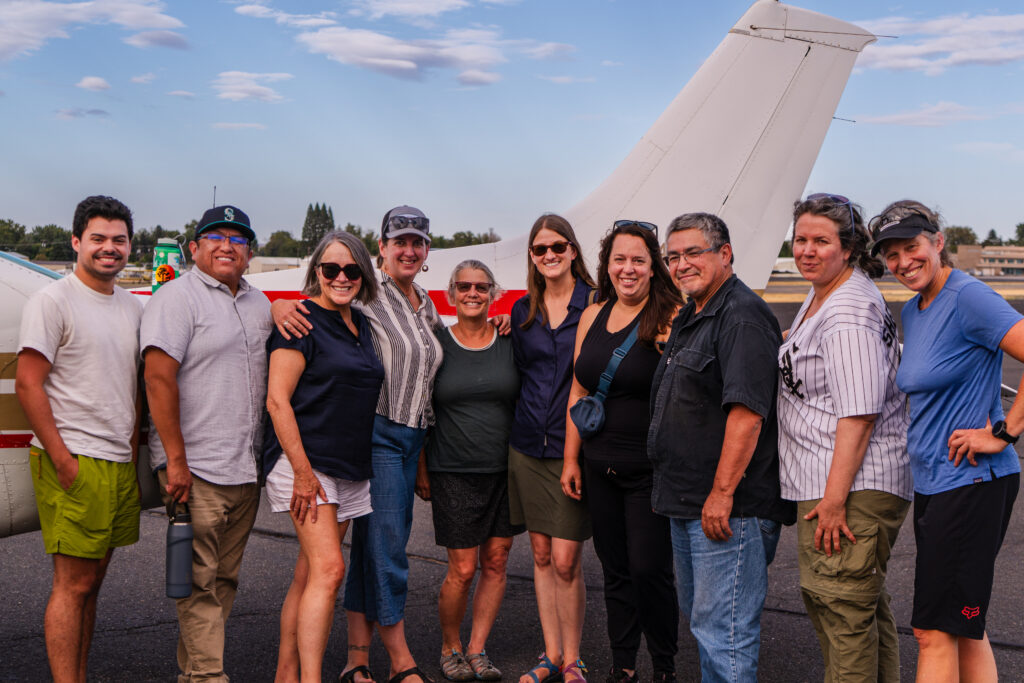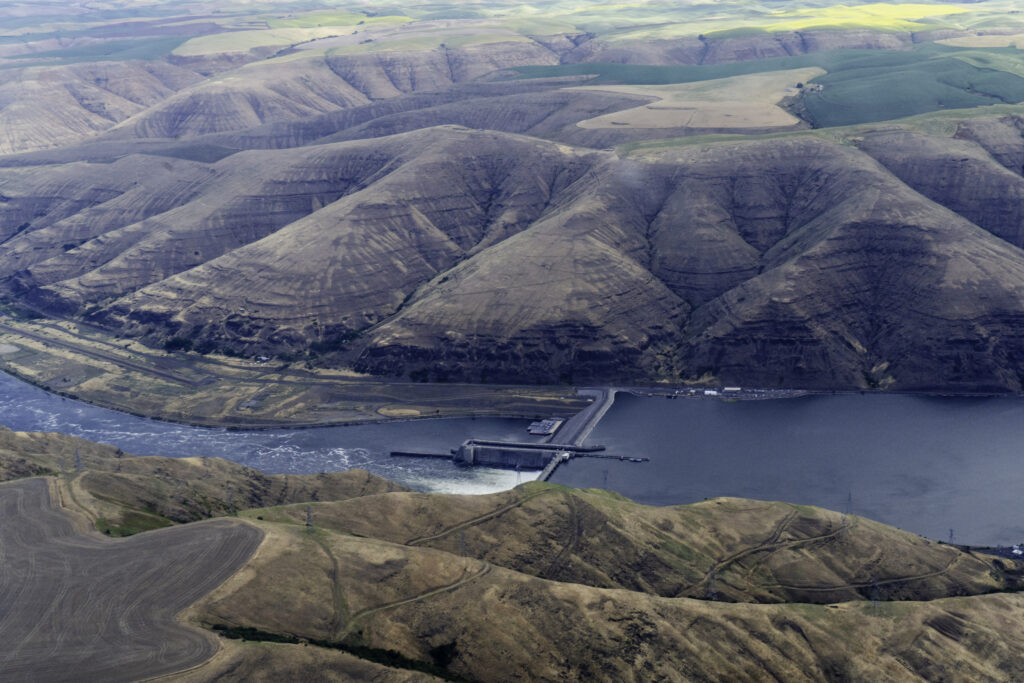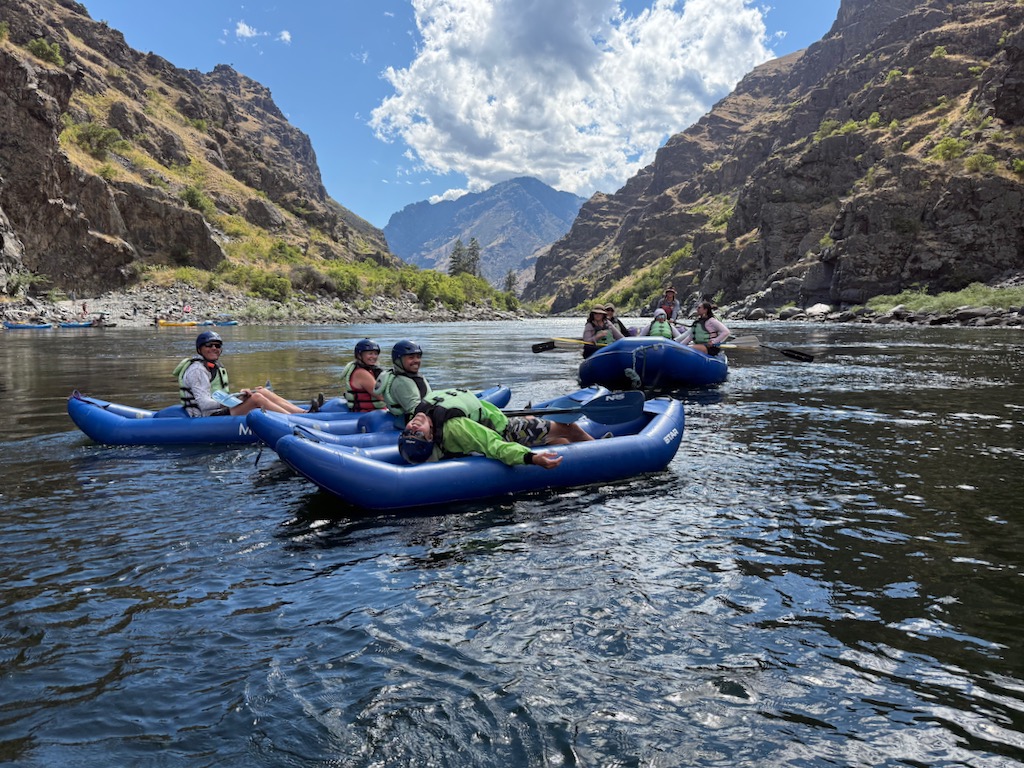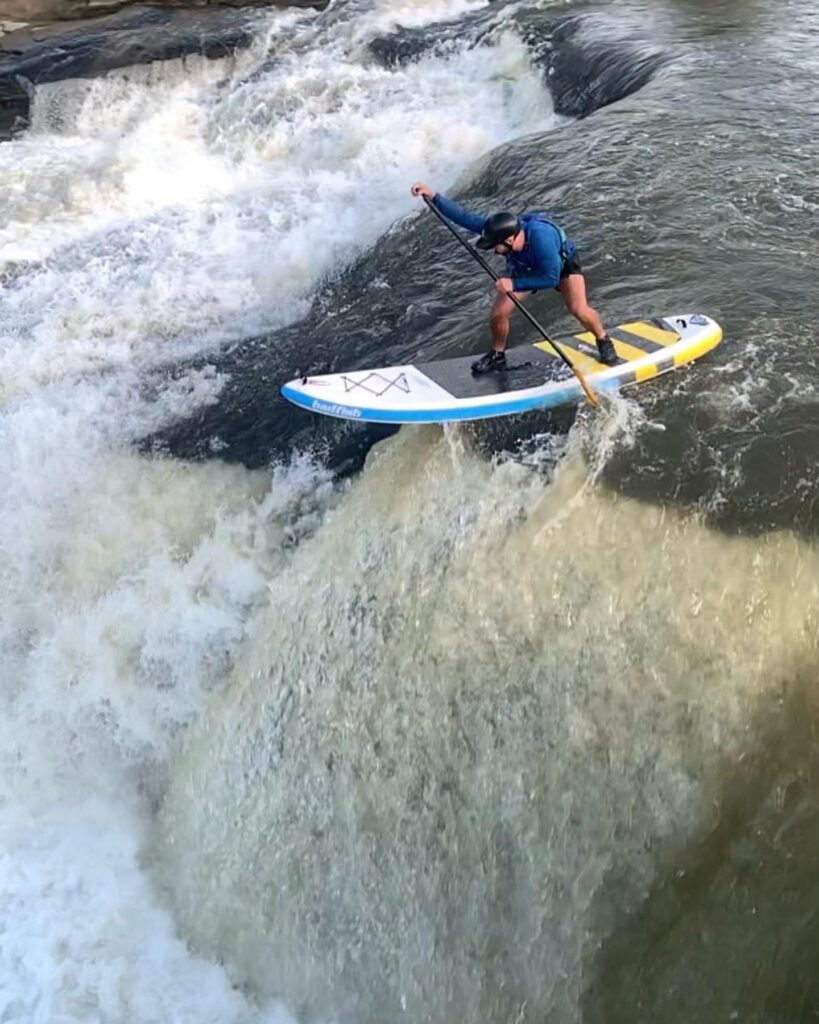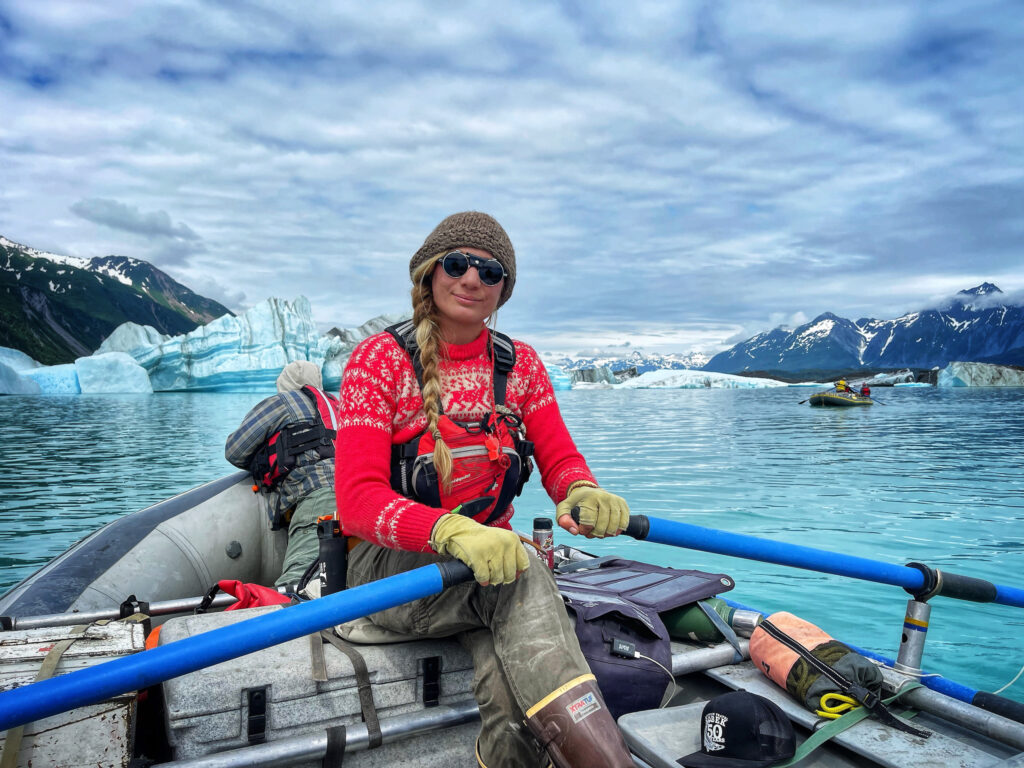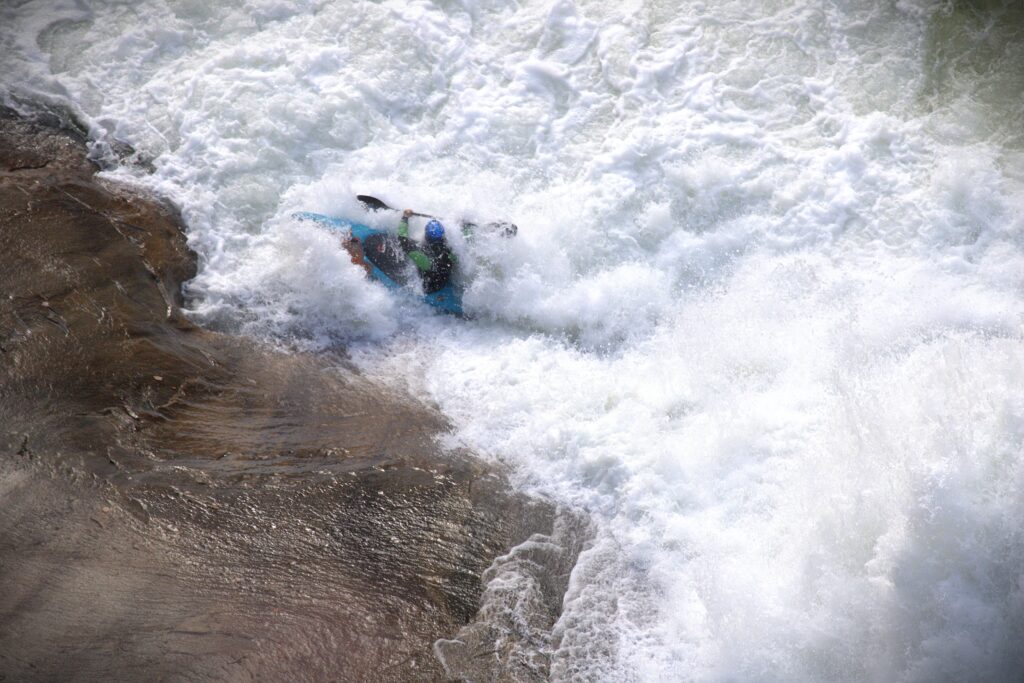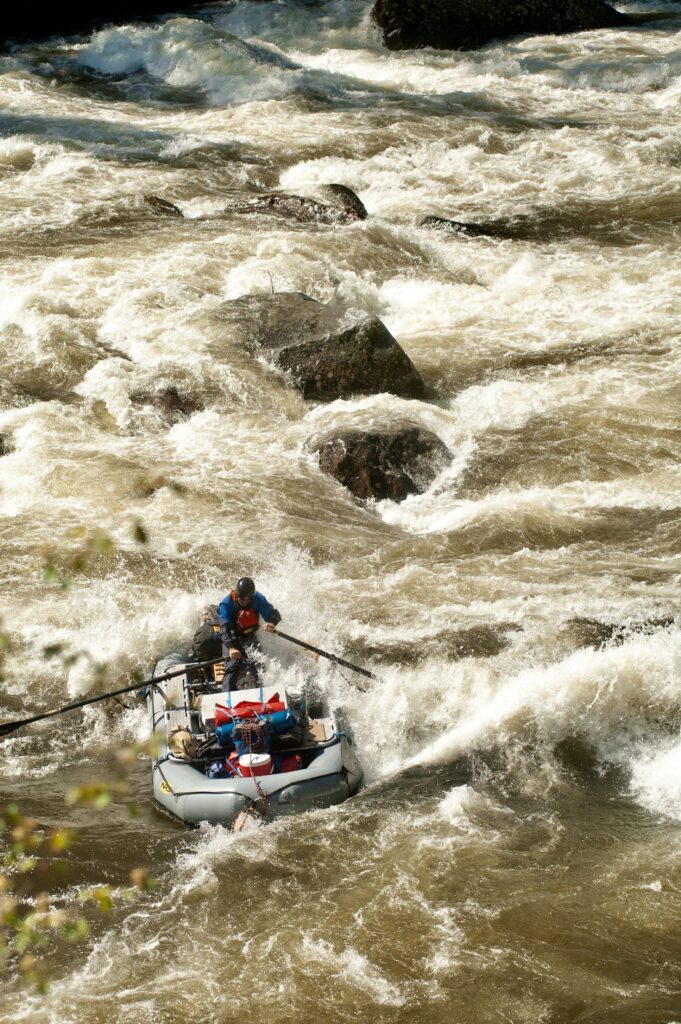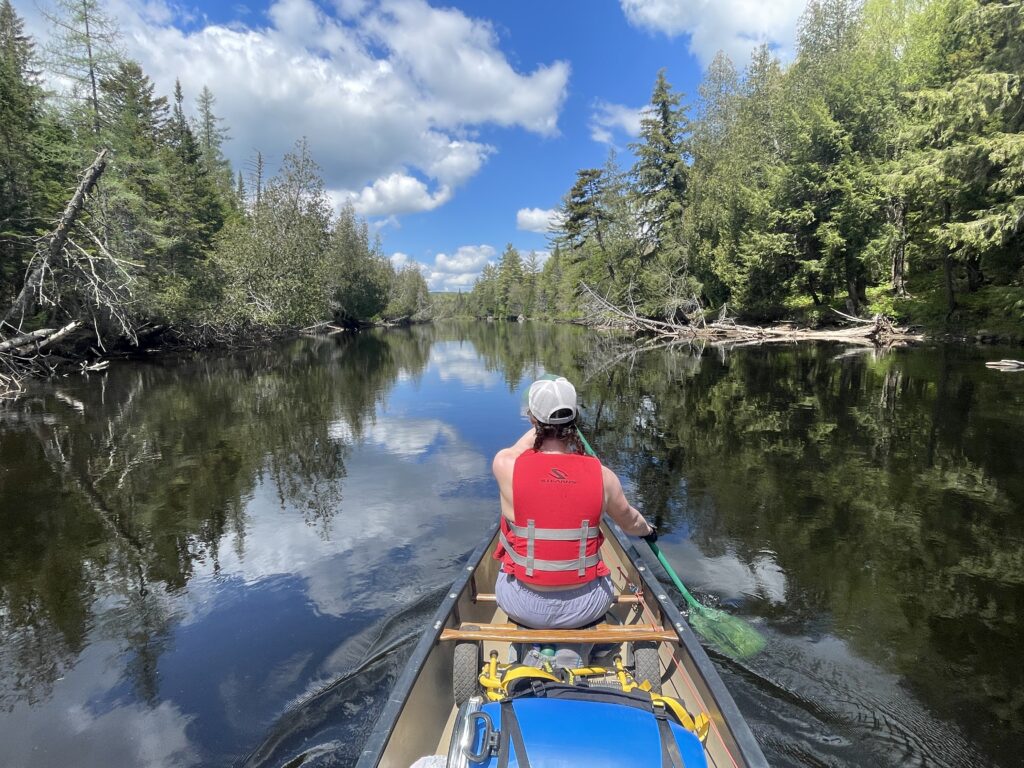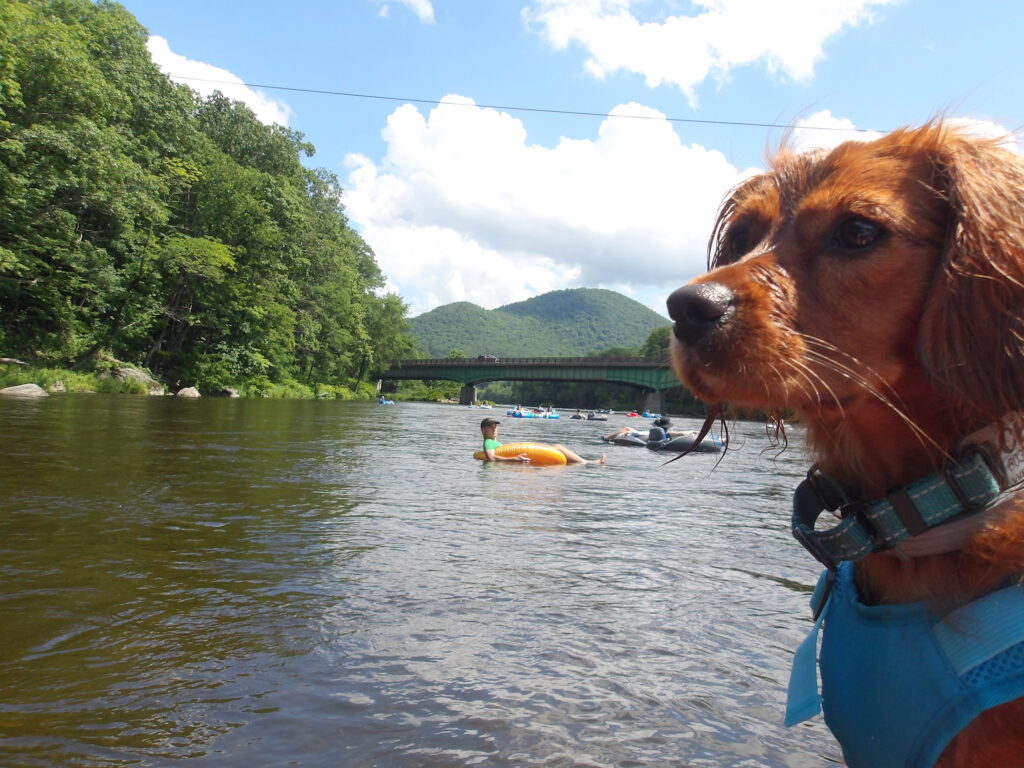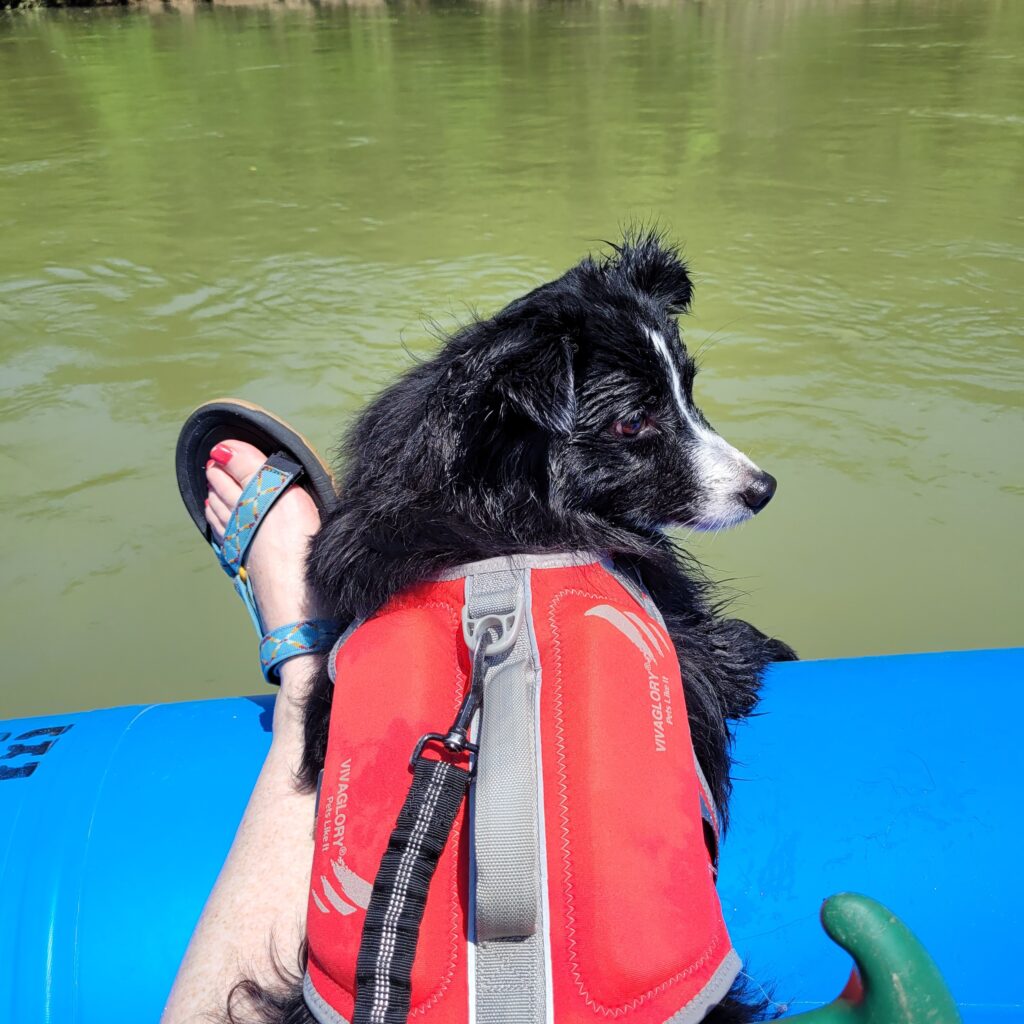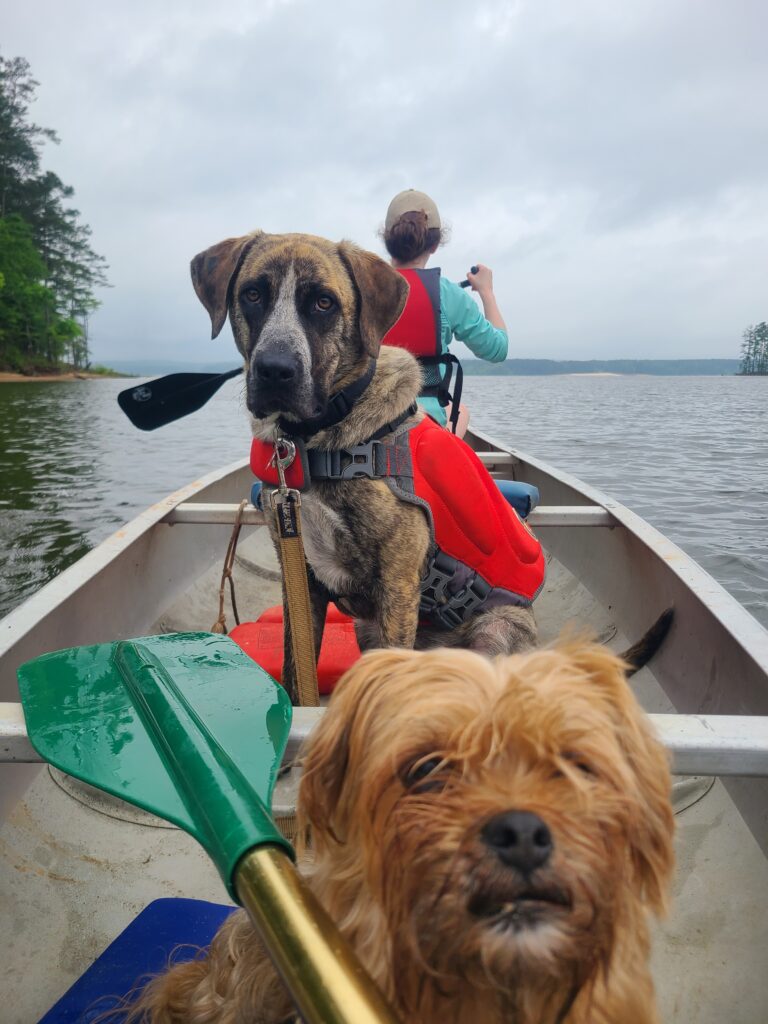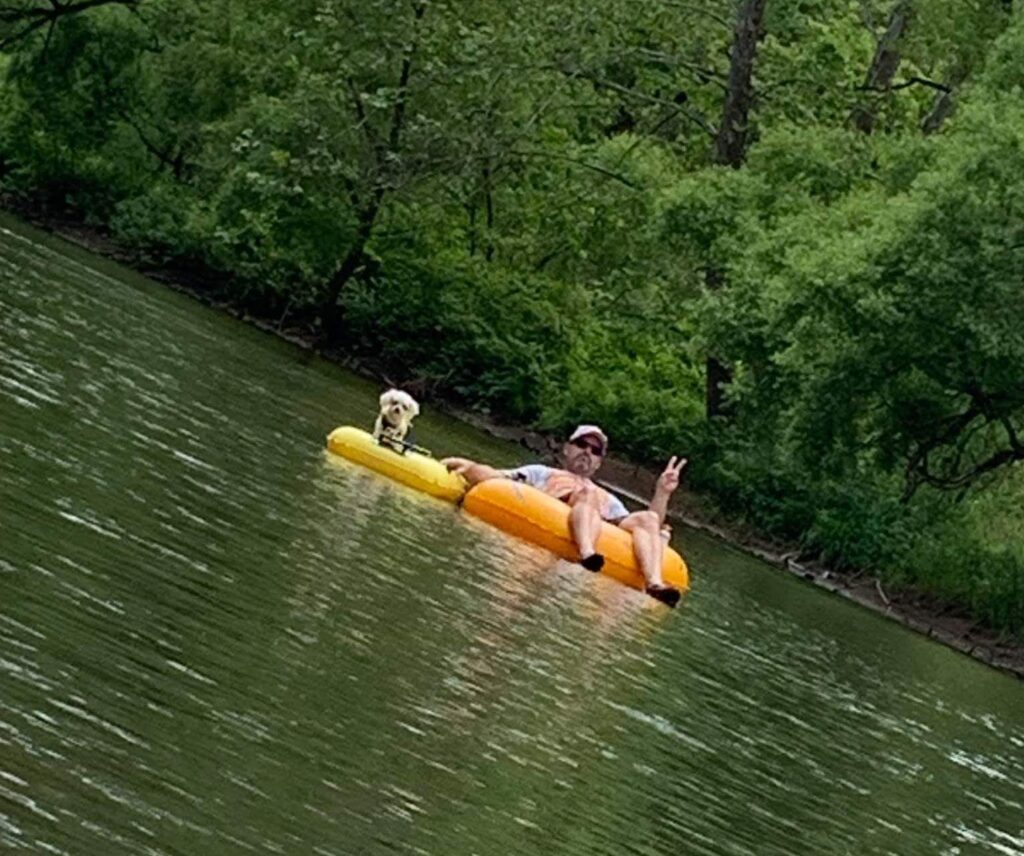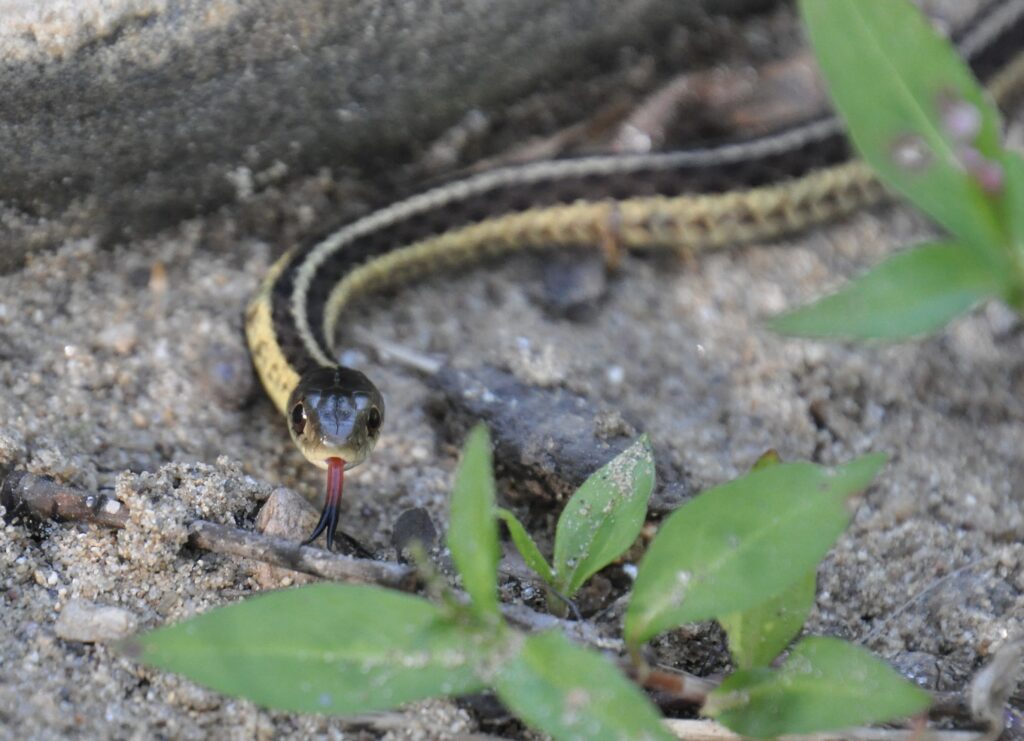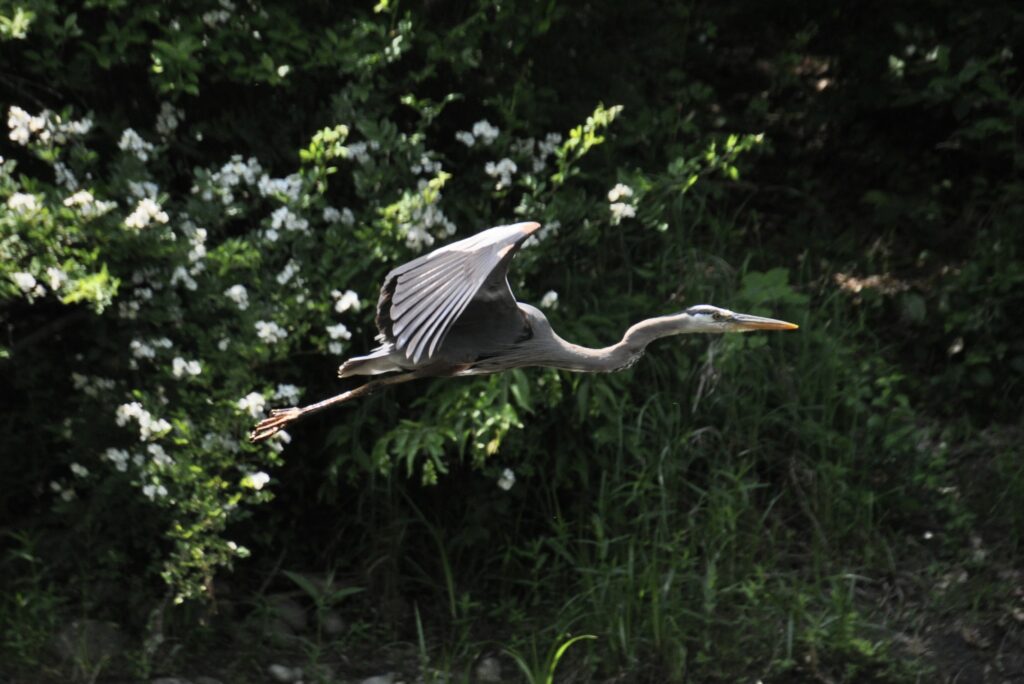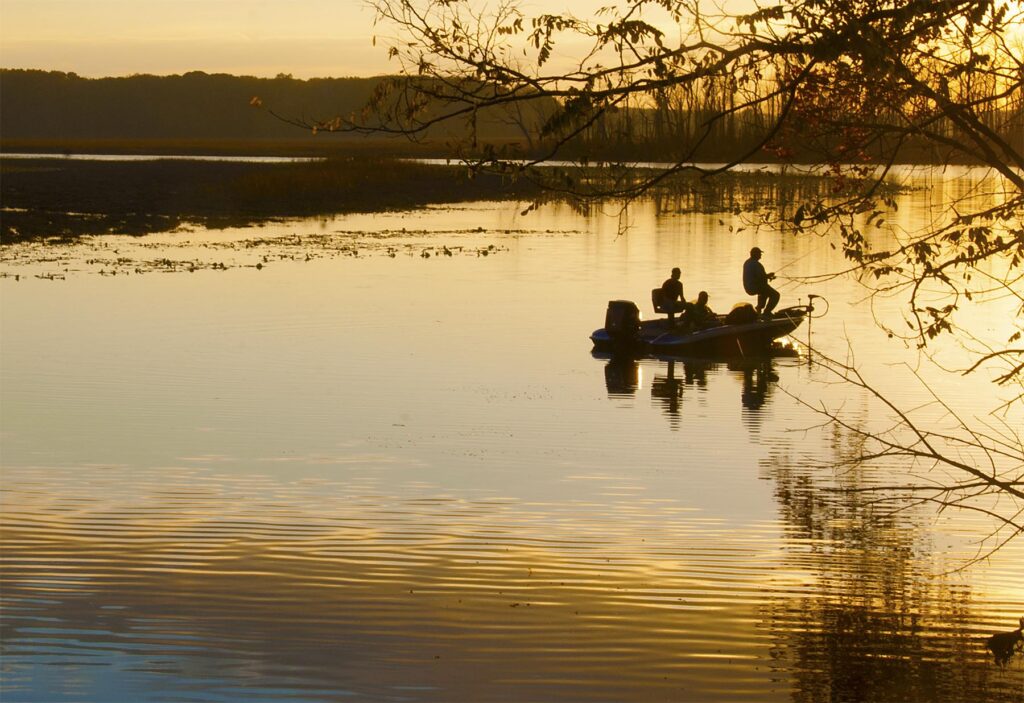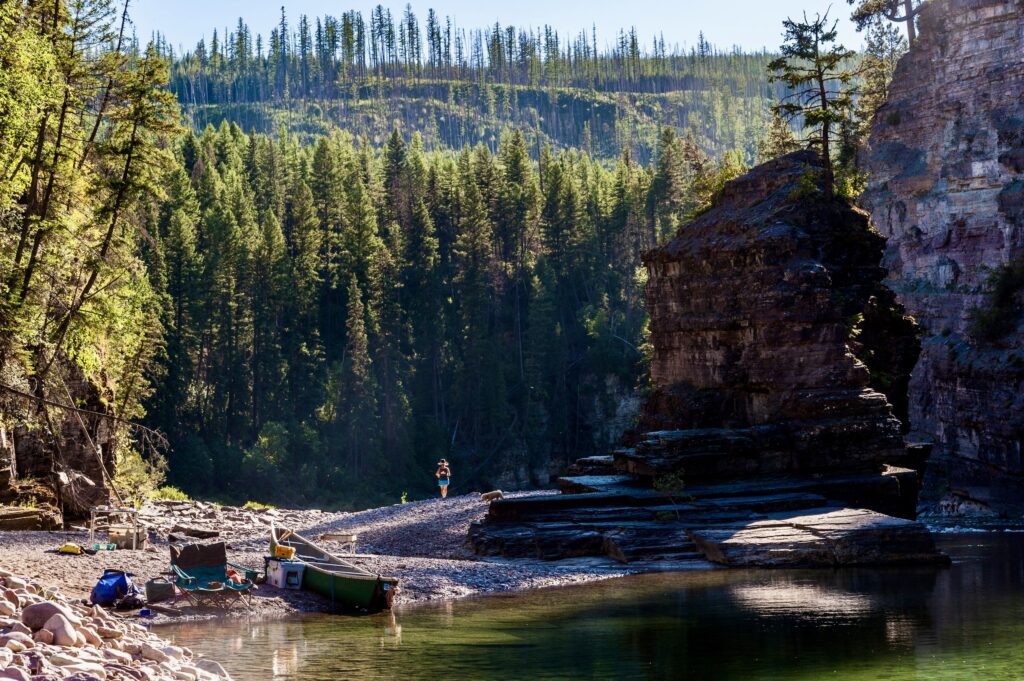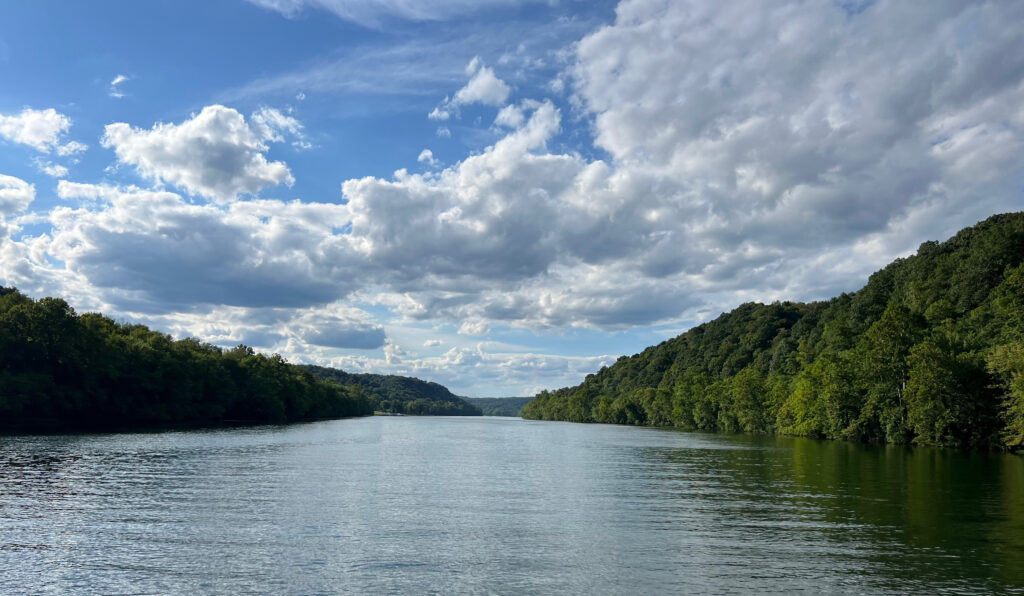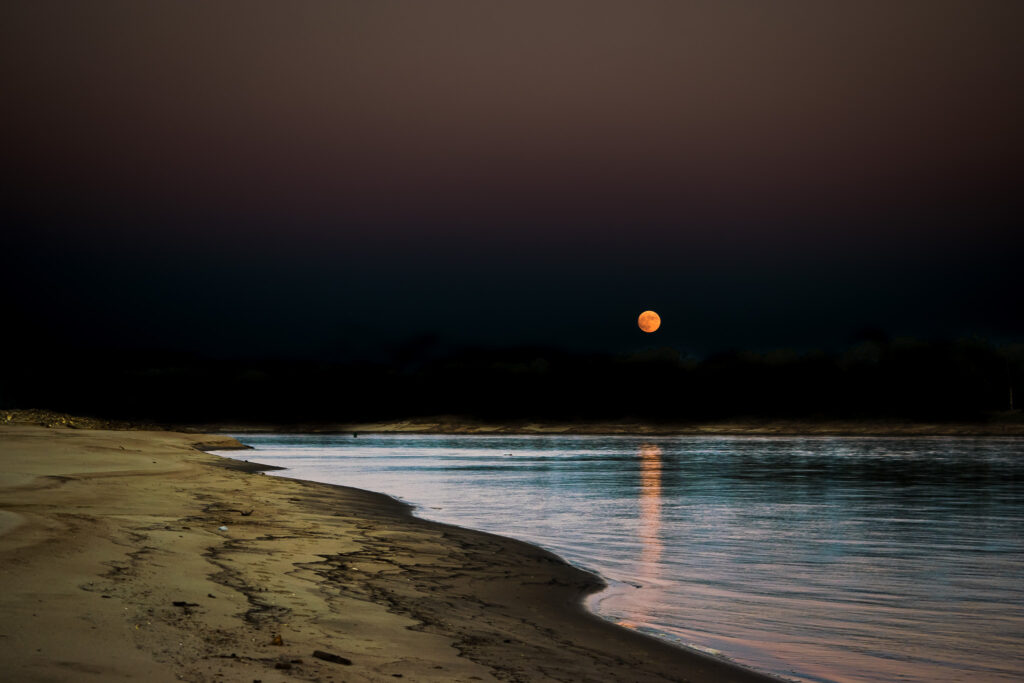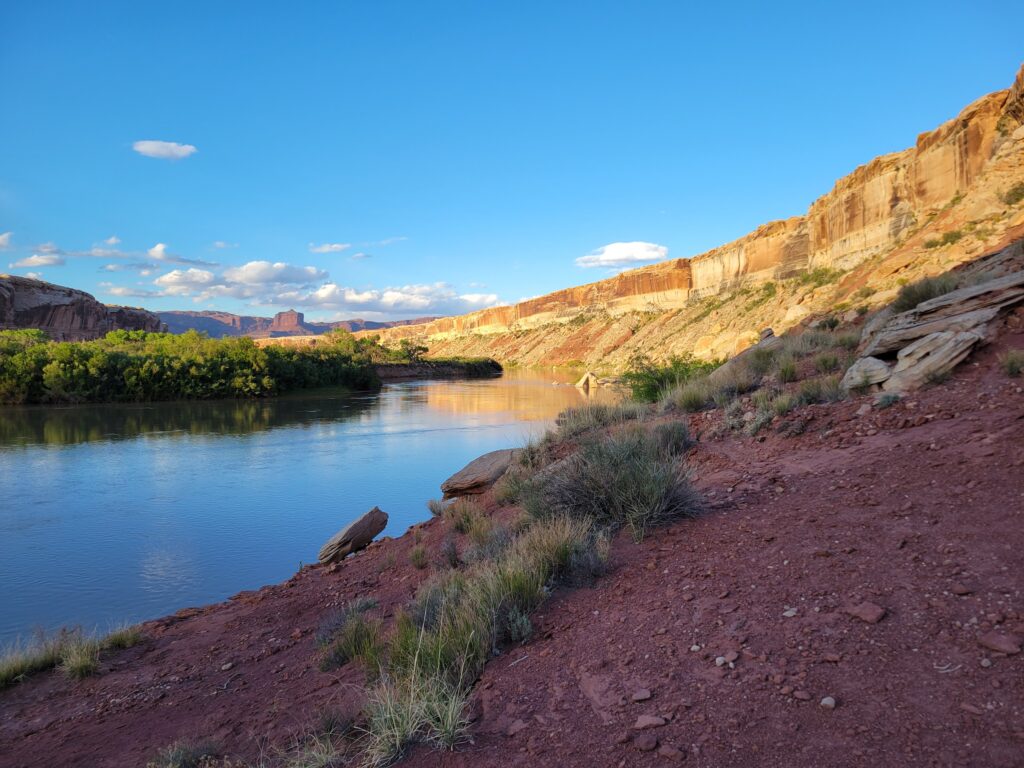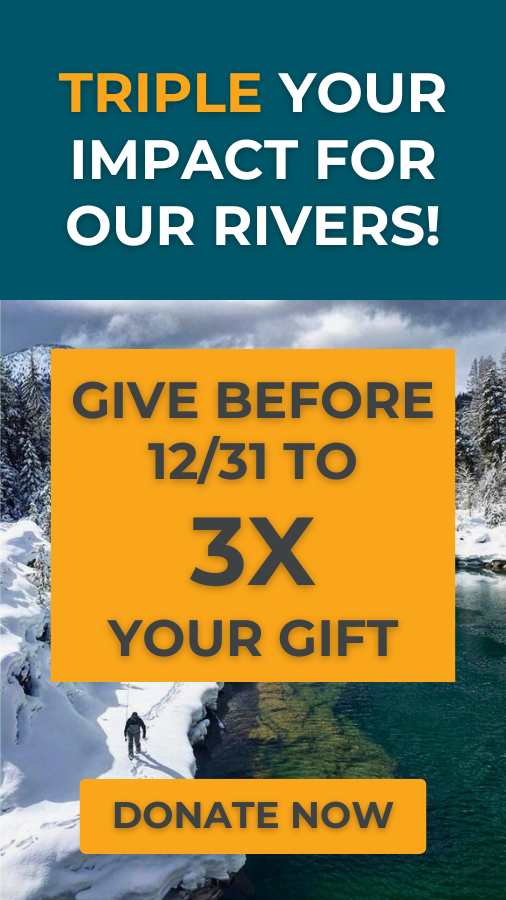The Yakima River Basin in Central Washington is experiencing one of the worst prolonged droughts in modern history. American Rivers visited our partners in the Yakima Basin Integrated Plan to witness the river and better understand the drought’s impacts on the fish, farms, and communities it supports.
Photographer David Moskowitz was able to help capture the story through the incredible images seen below.
Of all the signs that something is wrong—the curling leaves of stunted crops, the multiplying mats of river stargrass, the tense expressions of water managers—nothing tells the story of this drought like standing on the dry, hard bed of a drastically receded reservoir.
Between 1910 and 1933, the U.S. Bureau of Reclamation built five reservoirs to harness water for Washington farms and towns in the 6,000-square-mile Yakima Basin. Together, Kachess, Keechelus, Cle Elum, Bumping, and Rimrock store about one million acre-feet of water.
But not this year.
By September 2025, capacity was a mere 20%. That’s the lowest level since recordkeeping began at the reservoirs in 1971, marking a historic water shortage.
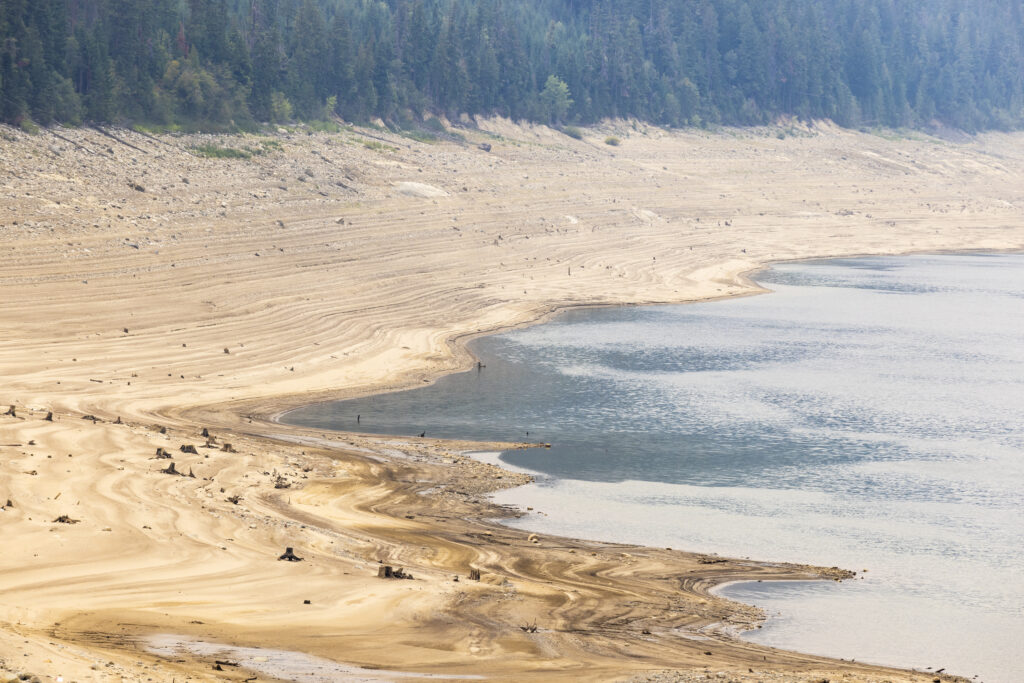
There simply wasn’t enough snowpack in the Central Cascades to fill the reservoirs in early 2025, leaving them with just 35% of the water they usually store at that time of year. Additionally, winter and spring rainfall was well below normal in the mountainous catchment in western Yakima County.
On April 8, this reality led the Washington Department of Ecology to declare that the upper Yakima, lower Yakima, and Naches watersheds had officially crossed into their third consecutive year of a severe drought.
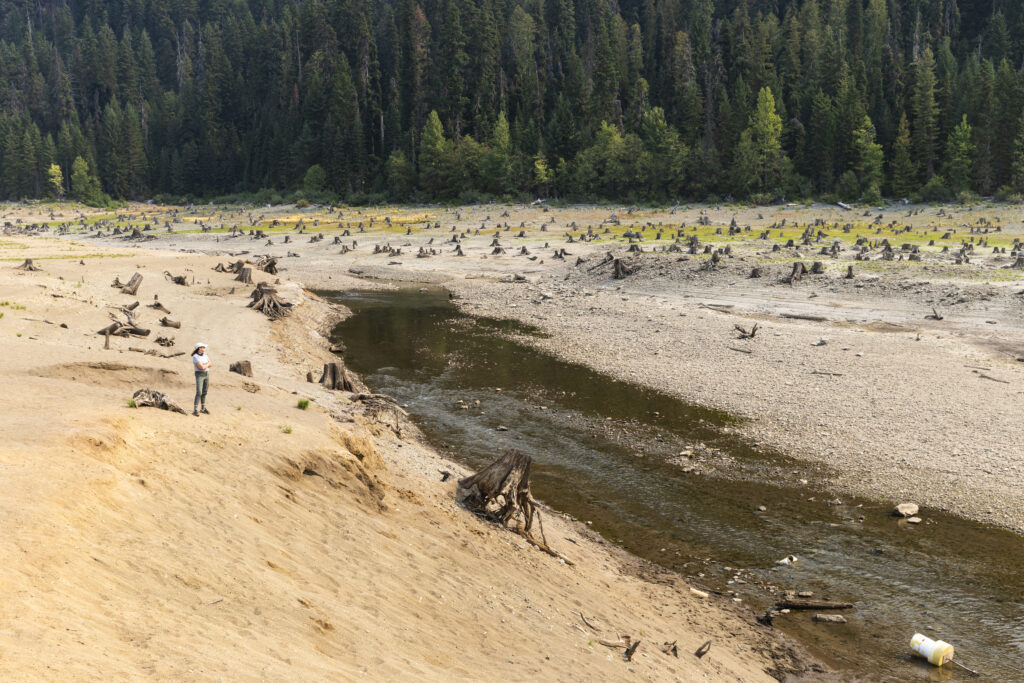
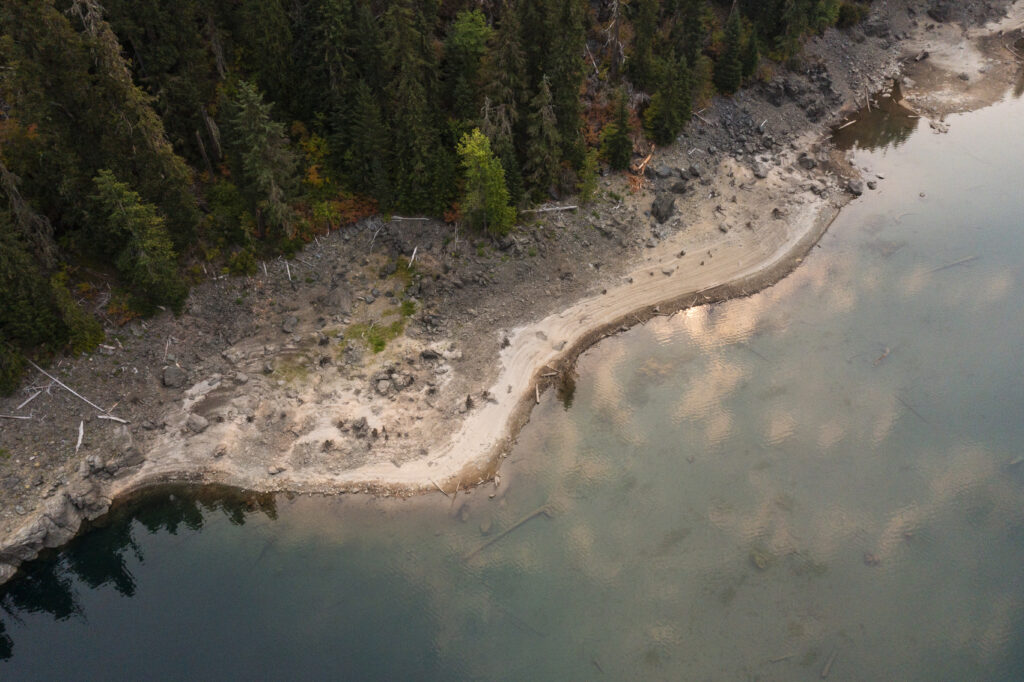
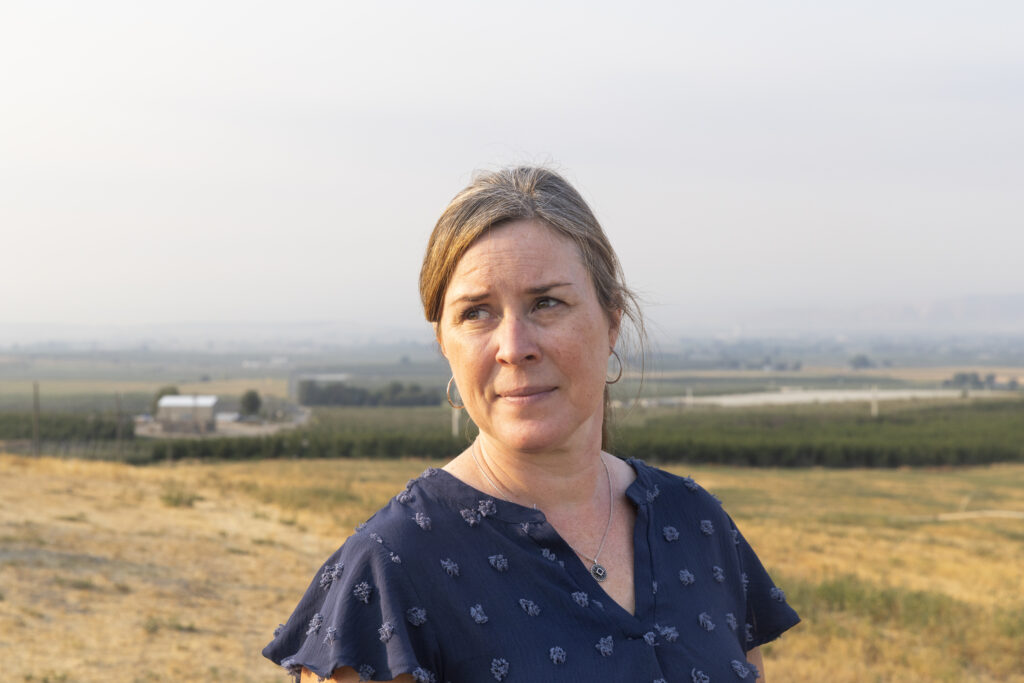
What happens—or doesn’t happen—with stored water in the upper basin sends huge ripples downstream to the Yakima River and its tributaries.
Irrigation districts that rely on human-made diversions in the river have been struggling to supply enough water to a $4.5-billion agricultural industry. Junior water rights holders, such as Roza Irrigation District and Kittitas Reclamation District, have strategized on the best ways to ration their reduced allotments—just 40% of the full amount they are generally entitled to—throughout the hot summer months of 2025.
“We’re running the canals the lowest we ever have,” says Sage Park, policy manager for Roza. “Our growers are facing a very hard time, with bad water supplies on top of bad markets.”
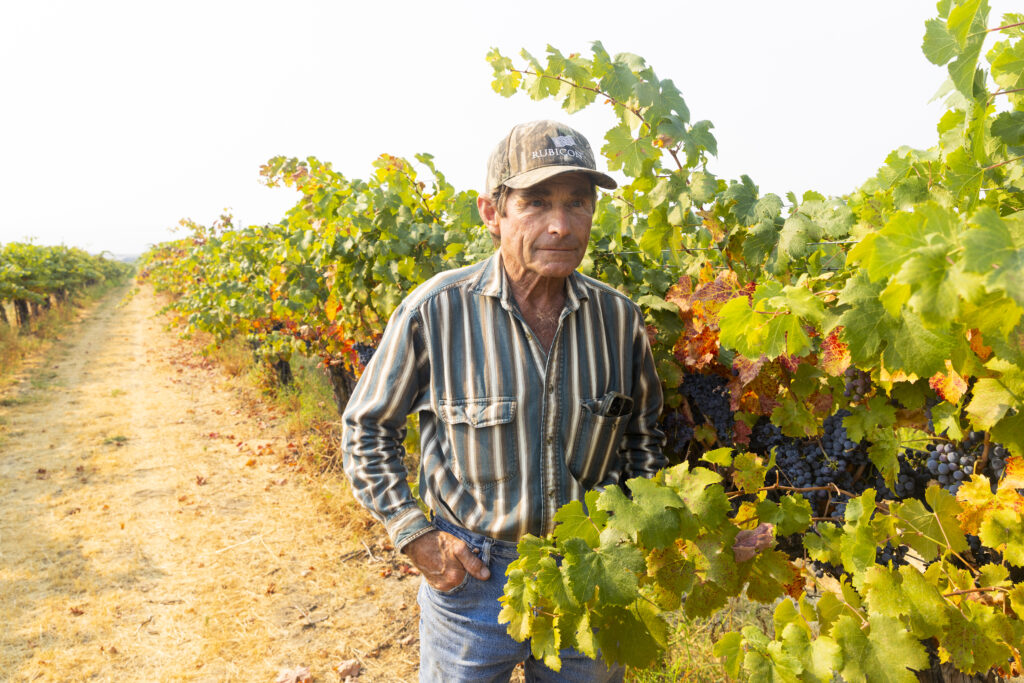
Some farms have gone out of business, confirms Jim Willard, owner of Willard Farms and Solstice Vineyards near Prosser, when we stop by. But he is hanging on. Willard established his farm in 1952, which means he has weathered the drought years of at least 1977, 1993, 1994, 2001, 2005, and 2015.
How does the current year compare?
“It’s another lousy drought,” Willard shrugs. “You know what you’ve got to do, the decisions you’ve got to make to keep the farm viable into the future.”
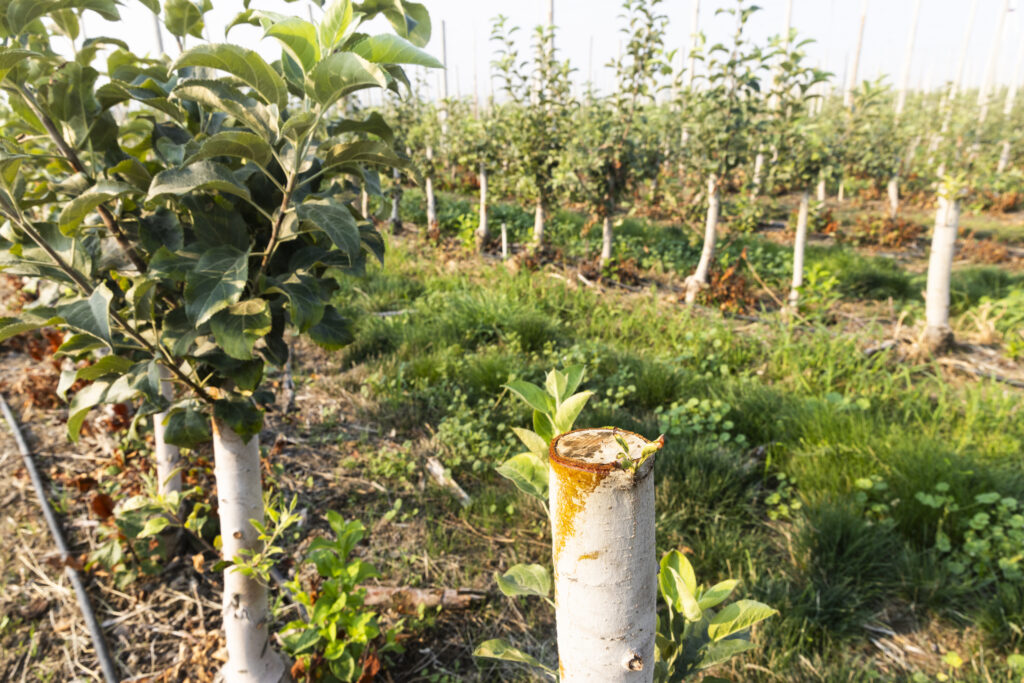
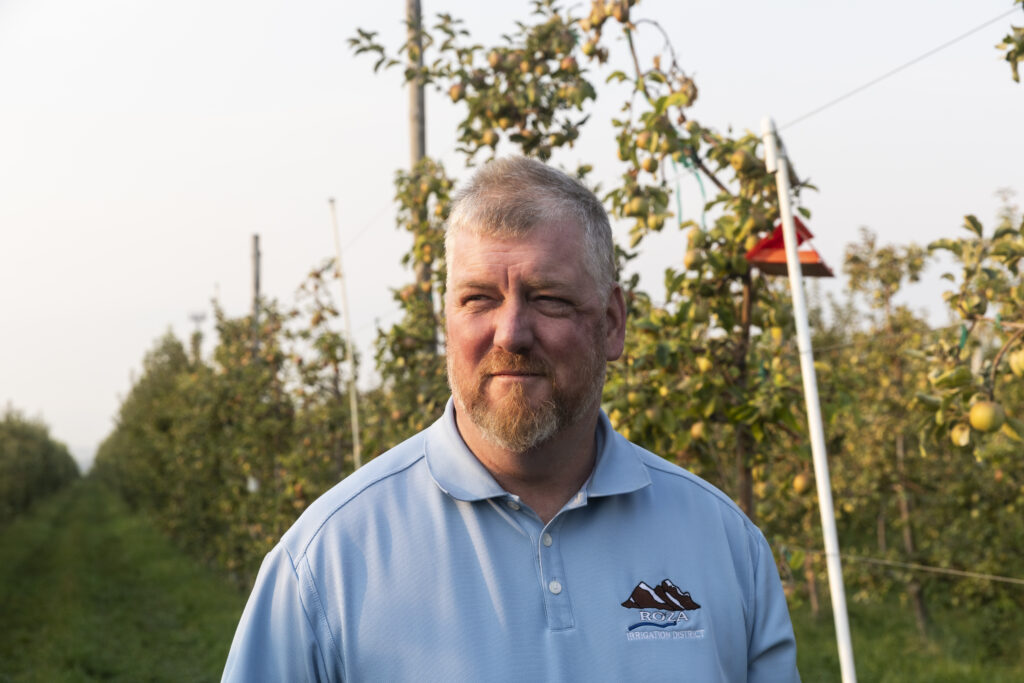
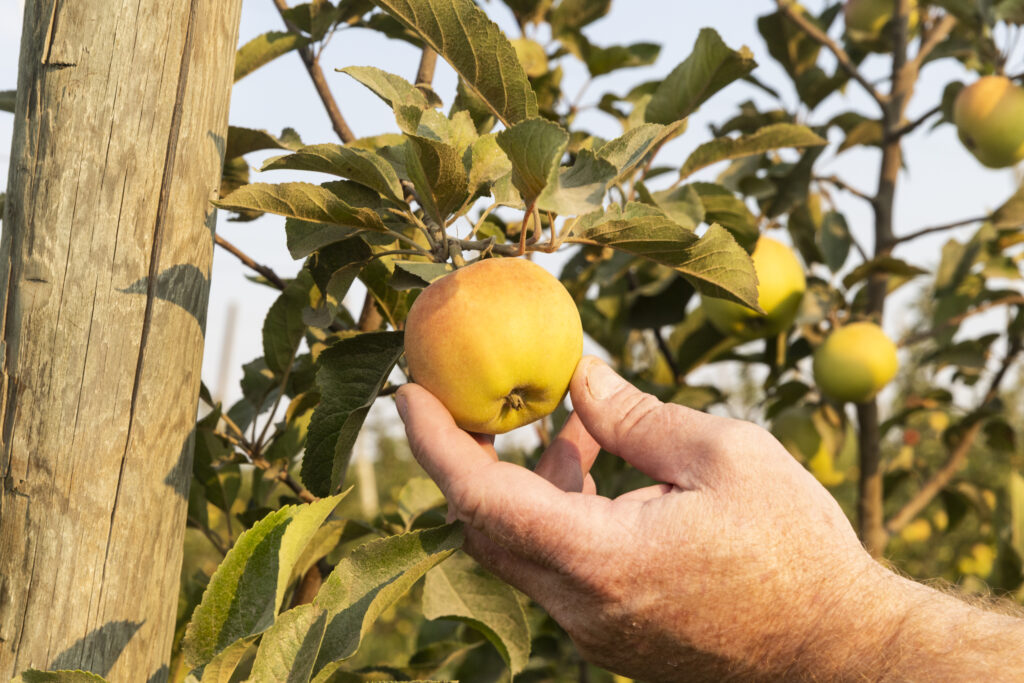
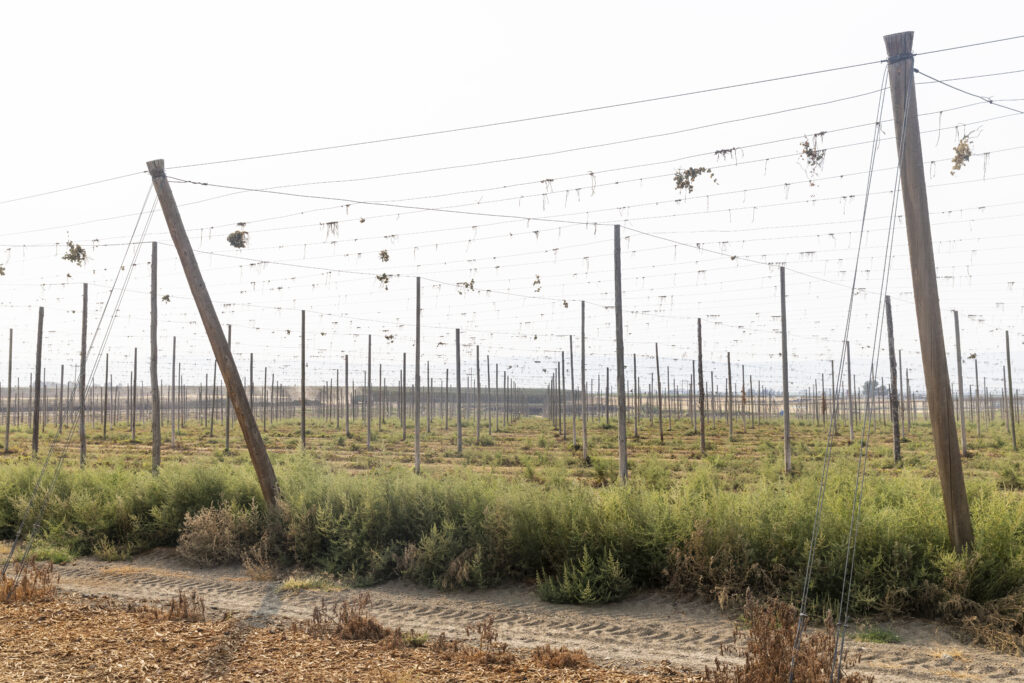
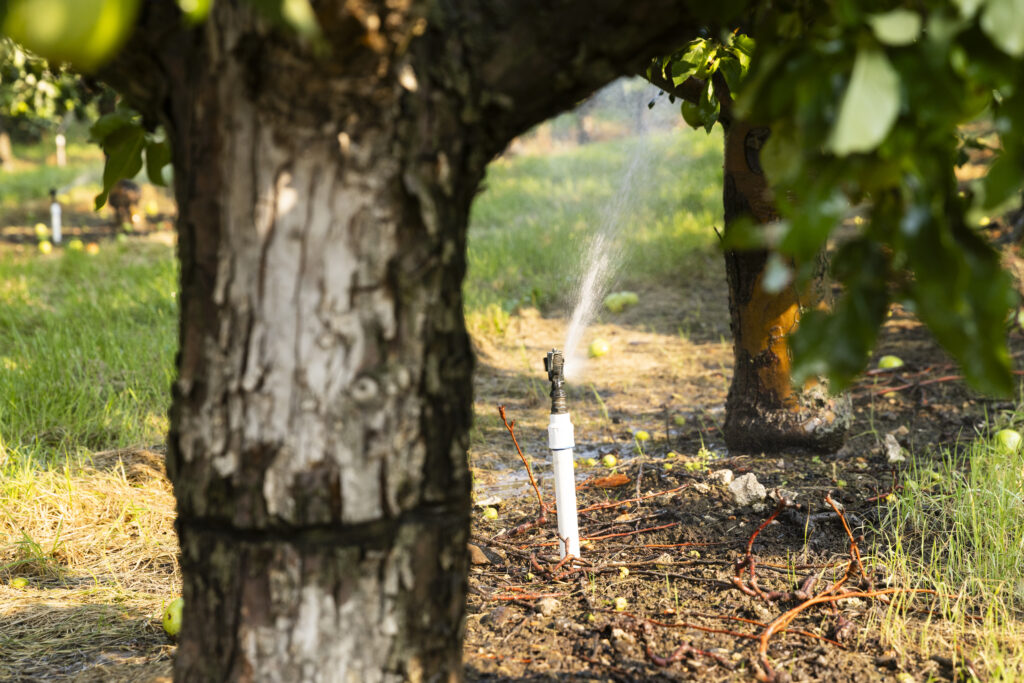
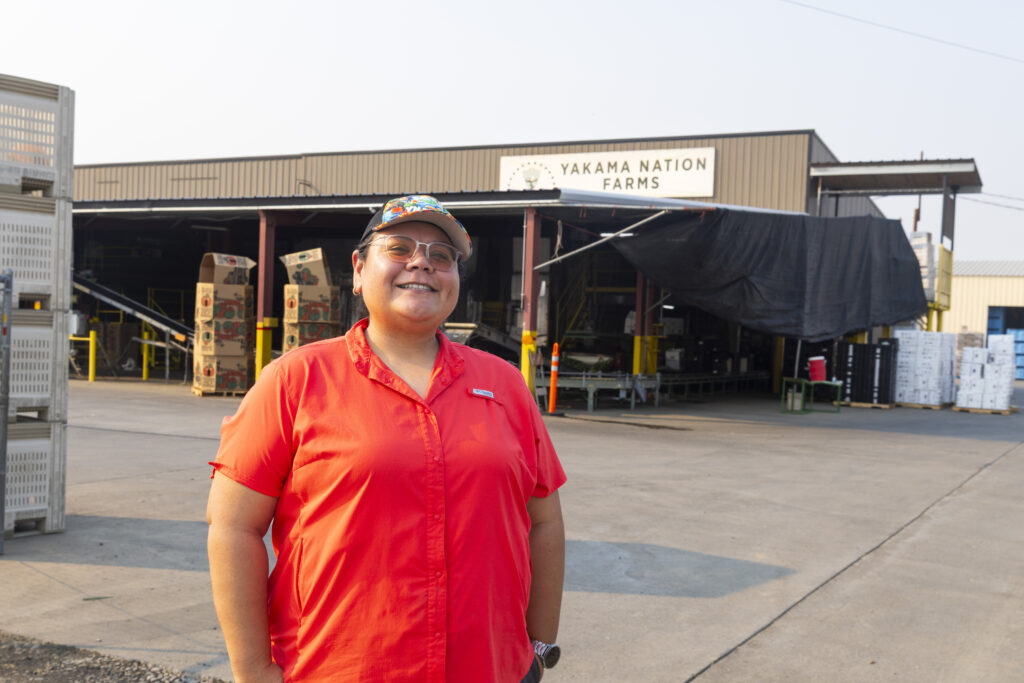
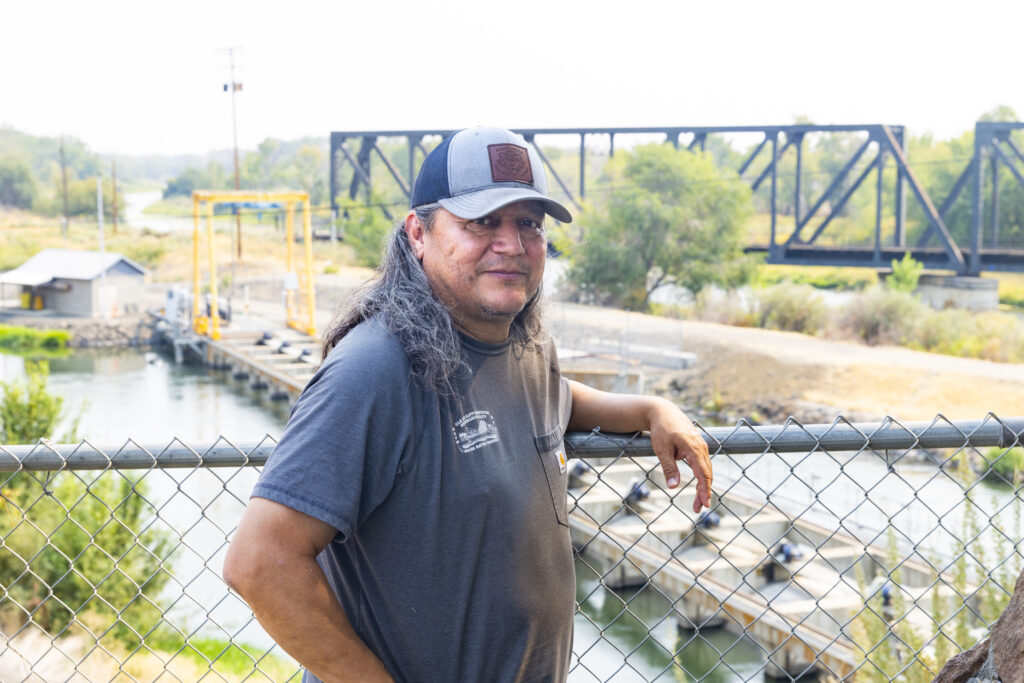
“The fish are always in drought,” Joe Blodgett, manager of Yakama Nation Fisheries, says matter-of-factly as soon as we meet at the Wapato Dam on the lower Yakima River.
The last significant drought in 2015 hit out-migrating juvenile salmon hard. Warm, shallow river water reduced their numbers from 1 million to 200,000. The fishery is still recovering—and now, another major drought.
Joining Blodgett is his team of engineers and scientists, who are dedicated to restoring habitat, improving fish passage, and growing and releasing hatchery salmon, bull trout, and lamprey to bolster drastically declining numbers.
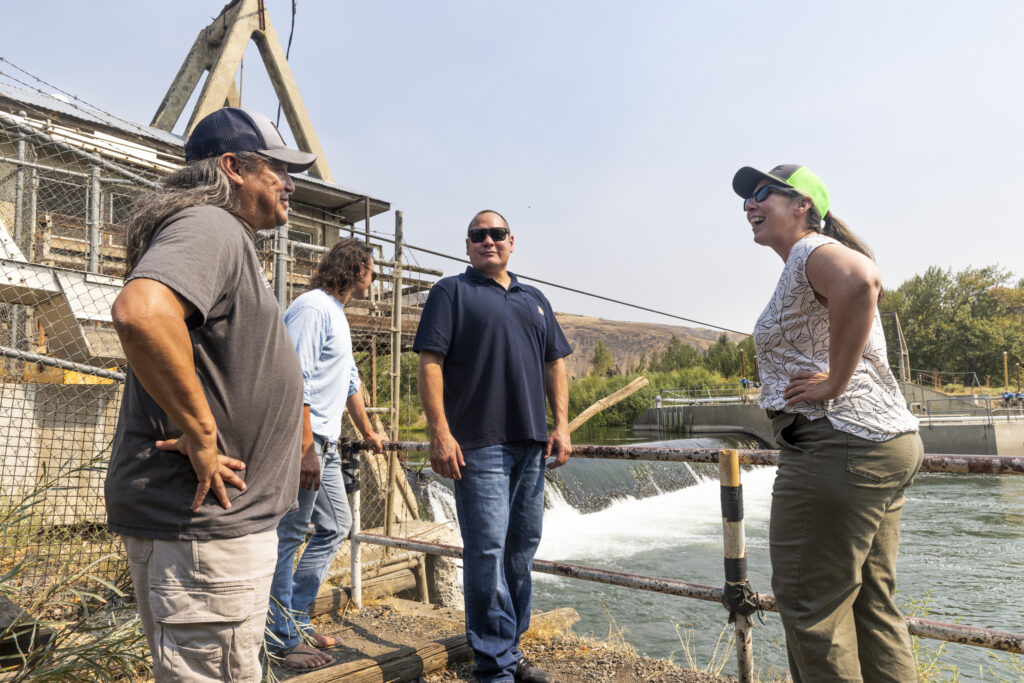
The Yakama Nation’s connection to native fish species in the basin traces back thousands of years. The salmon trade was the first economy of the basin, and that link remains critical to the tribe’s identity and cultural and economic survival today.
A little downstream, a small fishing scaffold protrudes into the river—a reminder of a bygone era long before the dam, and a symbol of the harvestable and sustainable future the Yakama Nation’s 10,000 members envision returning to.
One day. After the drought breaks.
Until then, the fisheries team is preparing with an ambitious plan to update the ailing Wapato Dam, built in 1917, and construct modern fish passage to improve survival rates.
“Each species has a story to tell,” Blodgett says, smiling, as we part ways for today.
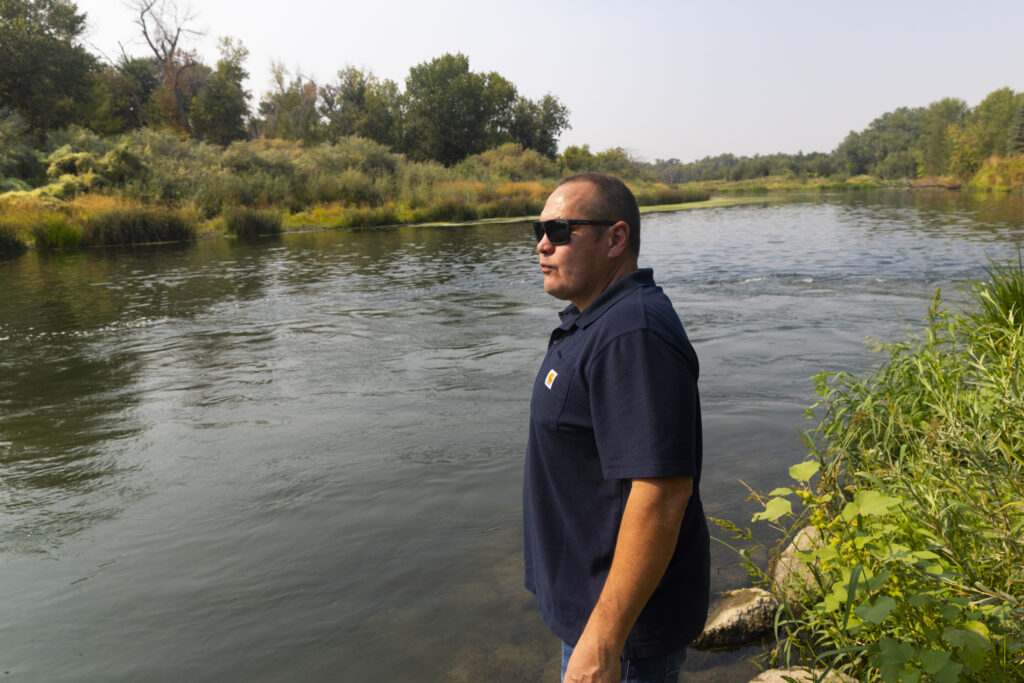
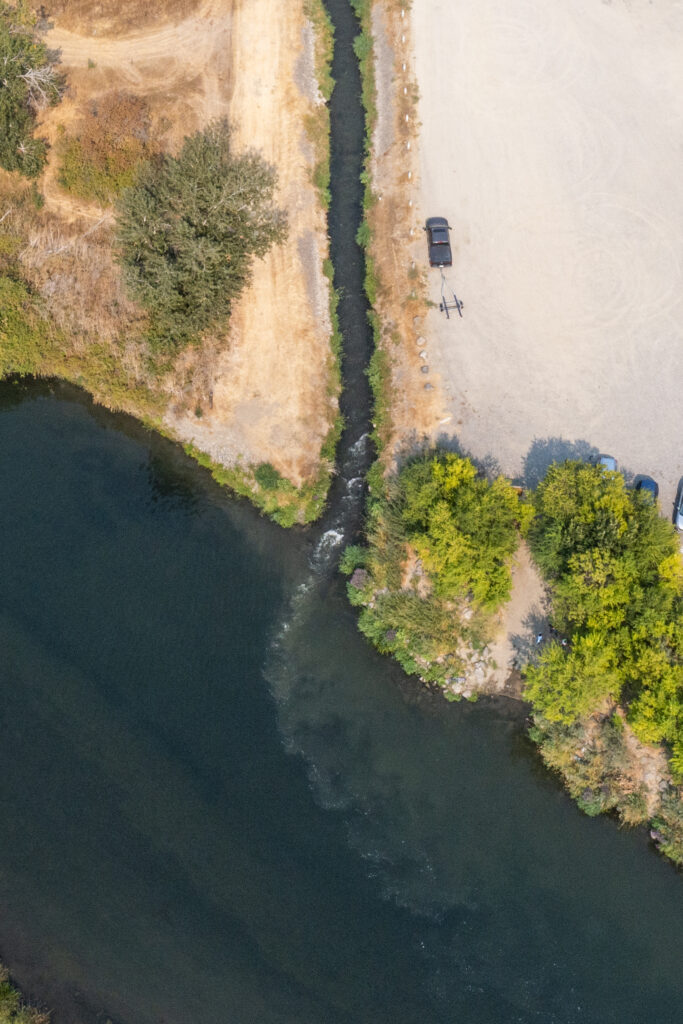
Even in drought, the Yakama Nation and the irrigation districts, conservation organizations, and government agencies that make up the Yakima Basin Integrated Plan collaborate to increase flows of cool river water that fish need to survive.
Maybe it’s truer to say especially in drought.
That collaboration is unique in the West. It extends to a multitude of projects, many costing tens of millions of dollars, to modernize aging infrastructure, protect and restore fisheries and river habitat, improve water supply reliability, and store more ground and surface water.
“This is a terrible drought,” says Brandon Parsons, American Rivers director of river restoration. “But we’d be in a lot worse shape if we hadn’t made years of prior investments in the river. We have to continue to work together and implement projects if we’re going to lessen the impacts of more droughts like this.”
People in the basin know more frequent and severe droughts are on the horizon. They’re racing to ready the region and keep it habitable in a rapidly changing world. Families, fish and wildlife, business and agriculture—all life depends on the Yakima River’s ability to provide clean, cool, reliable water into the future.
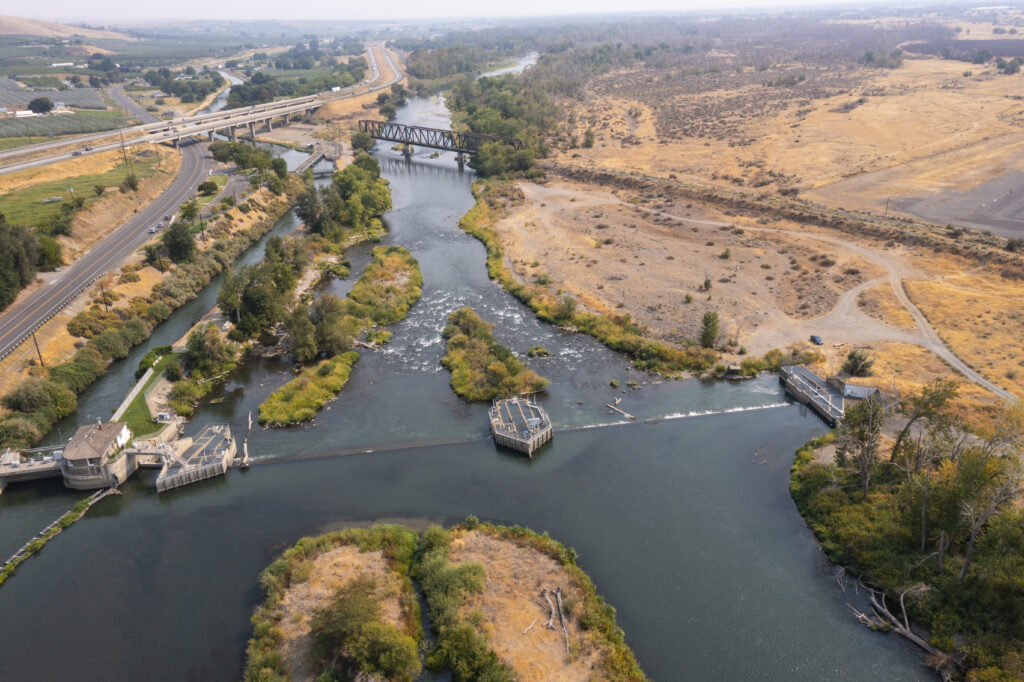
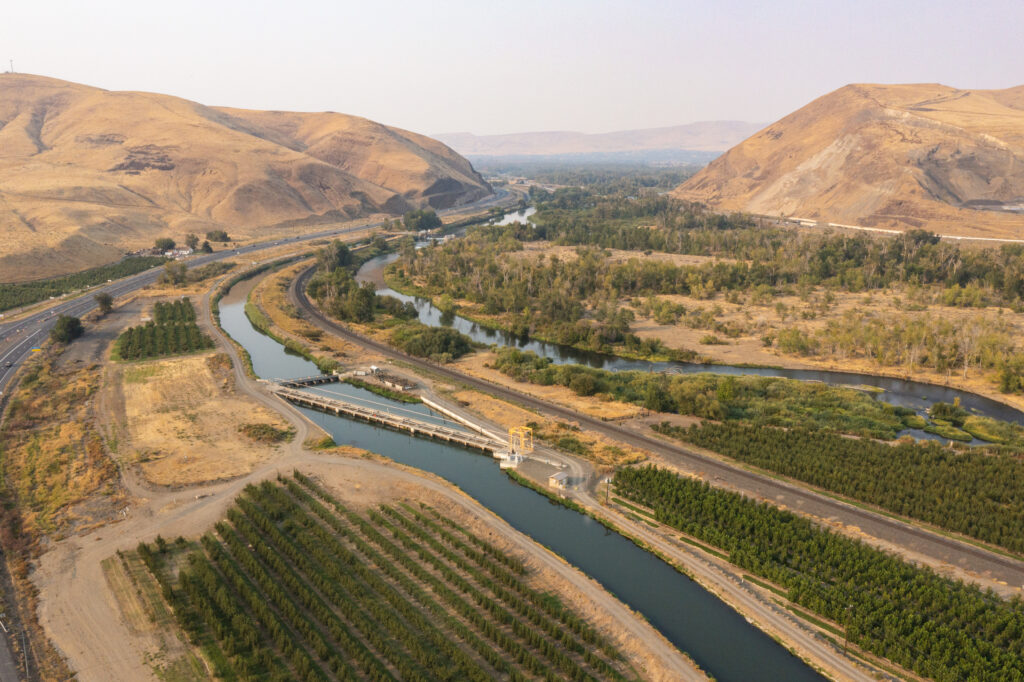
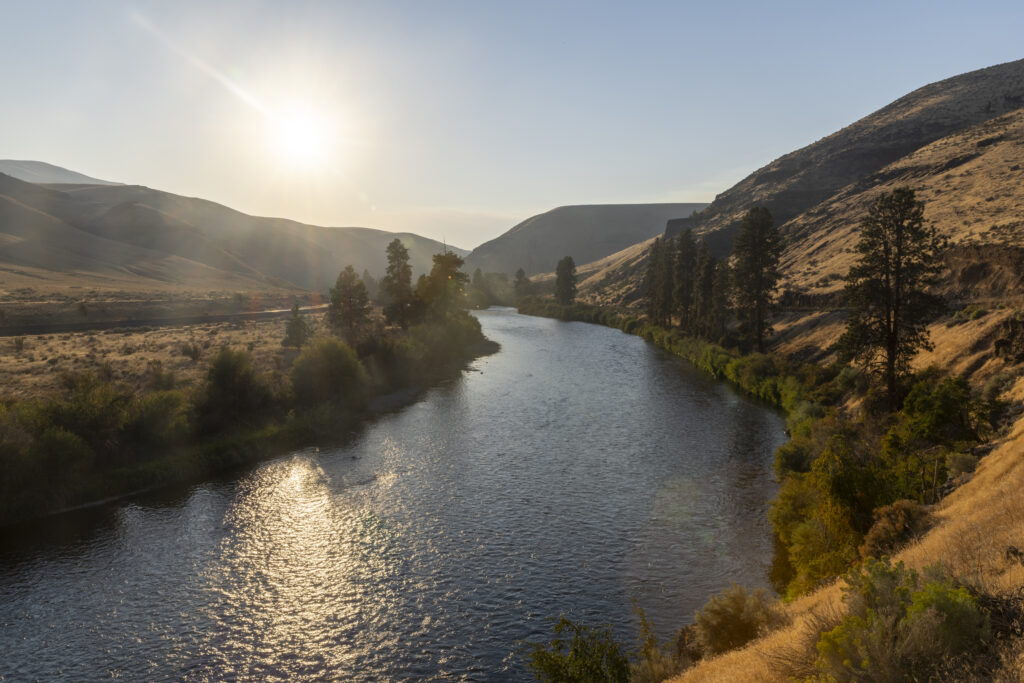
American Rivers recognizes the power of getting out and being on the rivers we are called to protect. Just as we need those rivers for our survival, the rivers need us, too.
When the federal government recently withdrew from a historic partnership known as the Resilient Columbia Basin Agreement, we knew it was time to take to the river once again to chart our path forward. We helped the Nez Perce Tribe lead a team of 17 Tribal representatives and multiple state legislators, congressional staff, and non-profit partners on a five-day Snake River trip through Hells Canyon, on the border of Oregon and Idaho. During this impactful trip, the group discussed current challenges and the historical context that brought us to this point, and brainstormed solutions for our region’s future.
Convening in Idaho: Day 1
After everyone arrived in Lewiston, we met up with EcoFlight to get an aerial view of the river and the surrounding landscape. We flew over the confluence of the Snake and Clearwater Rivers, through golden dryland wheat fields as far as the eye can see, and over Lower Granite Dam, where we spotted a lone wood products barge waiting at the lock for passage downriver.
Our group then joined the festivities at Hells Gate State Park, where groups were preparing food, art, and music for a “Free the Snake” flotilla the following day.
Not long after arrival, we all went to bed to get ready for our early flight to meet our river guides in Halfway, Oregon, for our descent through the deepest gorge in North America.
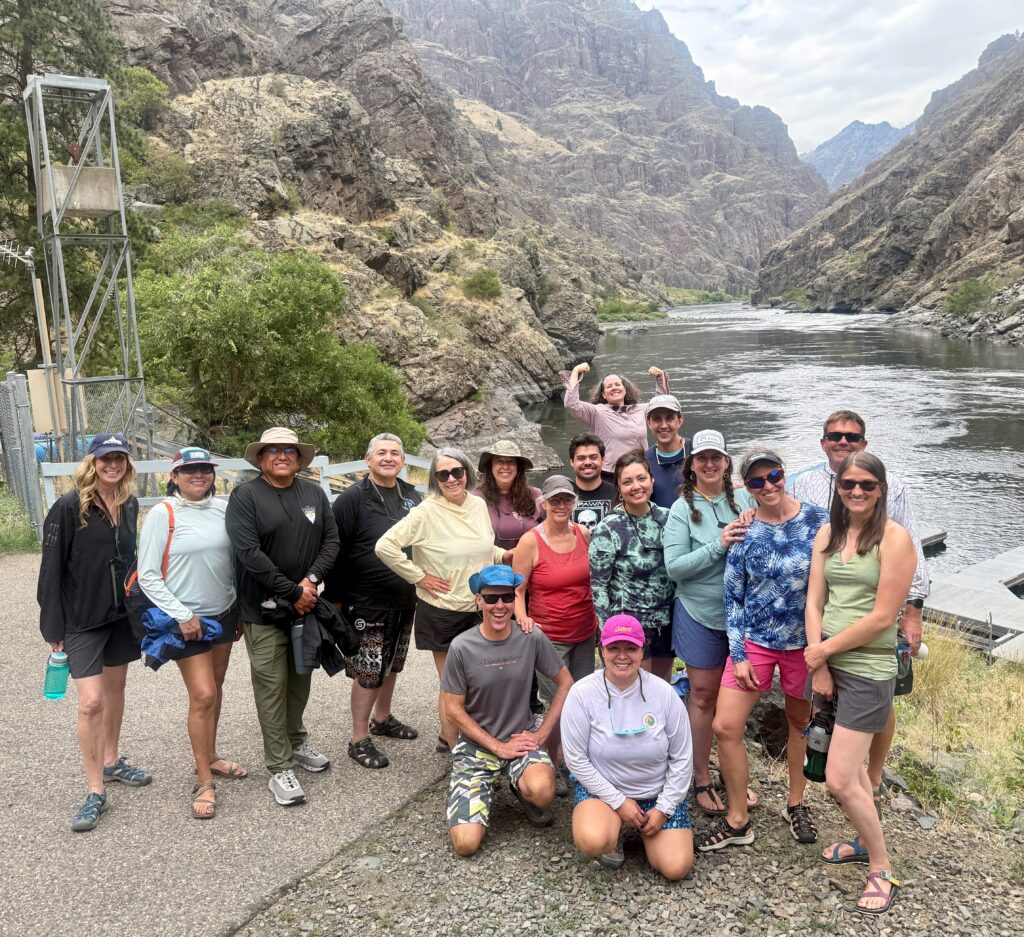
On the river: Day 2
After a safety talk the next morning, our giddy group began our four-day, three-night journey downstream. With the launch dock still in sight, we landed a rainbow trout on the first cast – clearly a good omen for the trip to come.
Our first lunch stop offered a warm welcome to Nimiipuu country from our gracious Nez Perce hosts, where we were grounded in creation stories and the importance of salmon, who represent the “first treaty” of a sacred promise between the animals and the Creator to care for the Nimiipuu people.
We took turns sharing who we were, where we came from, and our intentions for this experience.
After an easy day on the water in bright blue paddle rafts and sporty inflatable kayaks, we spotted a round black bear on the hillside, right above our camp. While our guides prepared dinner, a lively game of UNO sent laughter into the canyon, and the first of several sturgeon fishing efforts got underway.
After a bit of fun, it was time to get to work. We had an in-depth conversation about the Columbia River Basin, which included the health of the fish that depend on it and the results of our conservation efforts. We used clothing props and home-laminated maps to aid the conversation, which continued through dinner and dessert, until the darkened canyon told us it was time to go to sleep.
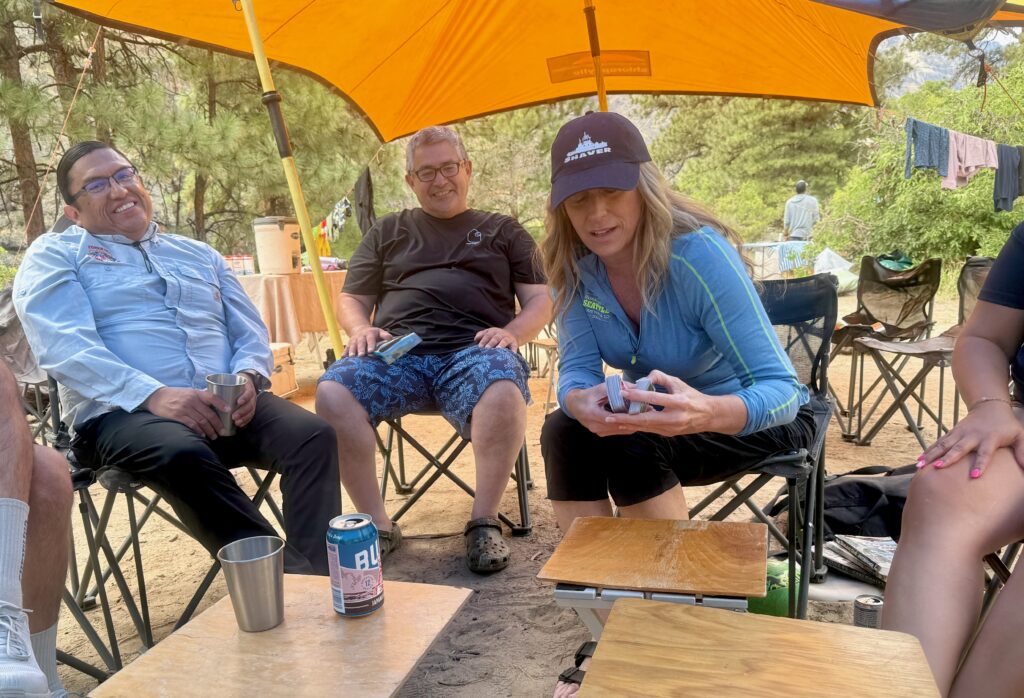
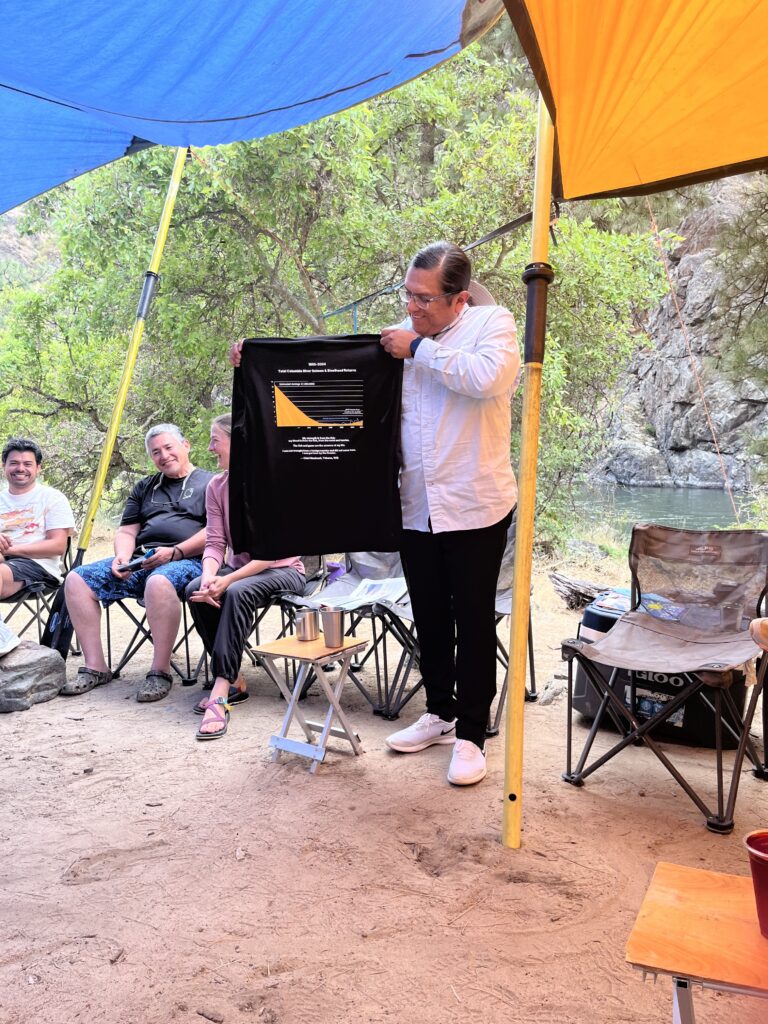
On the river: Day 3
Day 3 started with early morning conversations about regional energy needs over camp coffee. To advocate responsibly for breaching the four hydroelectric dams on the lower Snake River, we need to co-create clean energy alternatives that consider impacts to Tribes.
Lunch was dedicated to learning about first foods and seasonal rounds. Tribal members generously shared their histories and ties to place, how important their traditional foods are to their culture and well-being, and how each Tribe and place are unique.
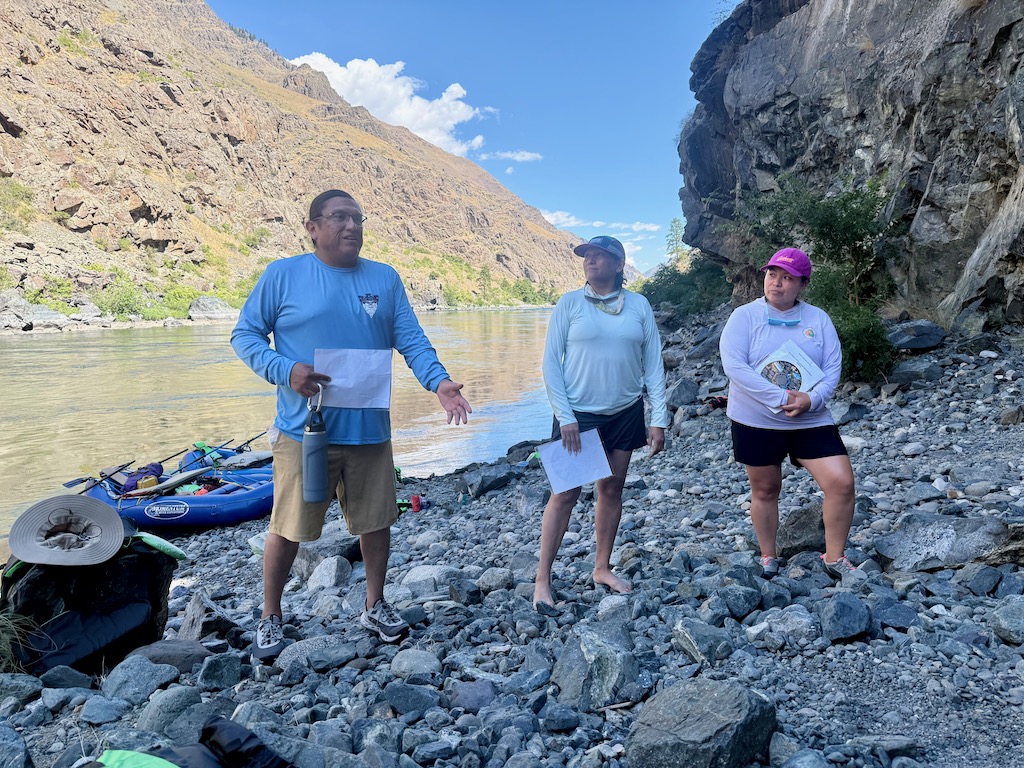
After paddling through Wild Sheep and Lower Granite rapids, most of our crew beat the heat by jumping in the water to float the remaining distance to our second camp. Our group had found the river magic!
Although this camp is technically called Oregon Hole, I will forever remember it as Sturgeon Hole. Since we were skunked the previous night, I wasn’t holding my breath that we would land a fish. A little later, while I was setting up my tent at the edge of the campground, I heard hoots and hollers and immediately knew what was happening – we got one!
My good friend, Rein Attemann, had reeled in a six-foot sturgeon! The fish was in the water, upside down, while a Nez Perce biologist evaluated her and explained her physiology to the captive group.
Like sharks, sturgeons are mostly made of cartilage, and flipping them upside down induces a trance-like state called “tonic immobility”. In this state, the fish becomes calm, allowing them to be handled gently before being released.
After dinner, we heard the second sturgeon line ping and several of us raced down to the water. I was keen for this experience and had bought a fishing license in Halfway. It took me a few tries to develop a rhythm, and reeling in this fish was no easy task, but as she got closer to the boat, I could see she was beautiful, mysterious, and massive – like a living dinosaur.
At 7.5 feet in length, she was likely at least 50 years old, making her bigger and older than me. She was probably alive before some (or all) of the four lower Snake River dams were constructed. She had a Floy tag, which meant she had been caught before. We wrote down the numbers to report to Idaho Fish and Game, turned her right side up, and released her to power downriver.
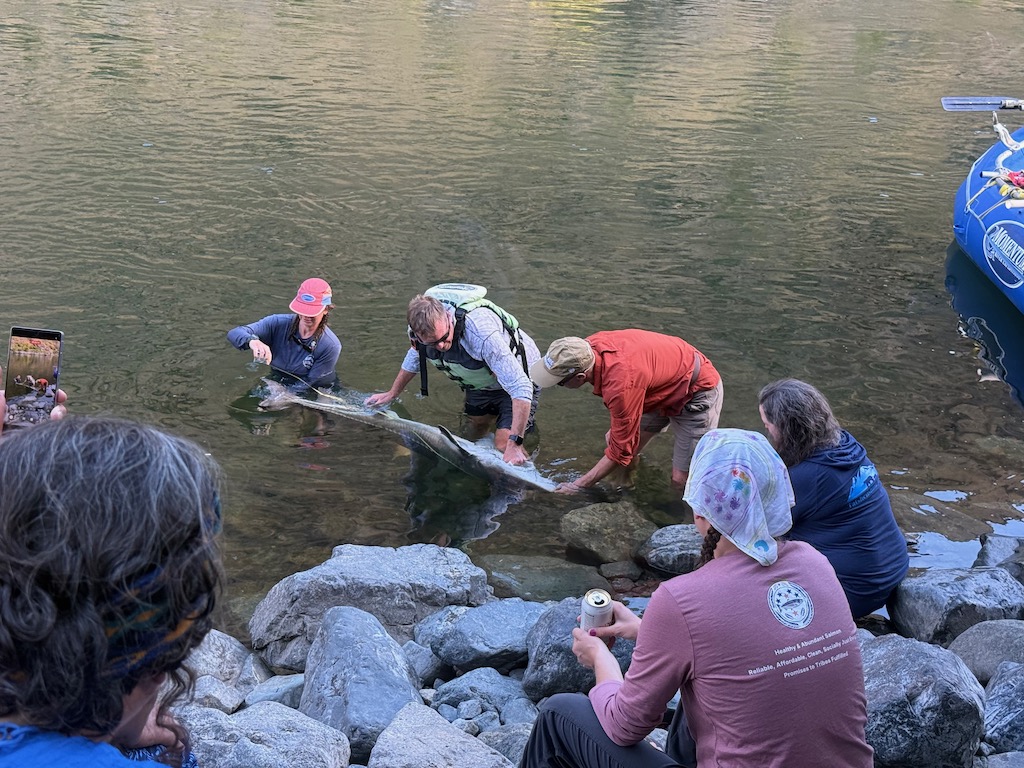
On the river: Days 4 and 5
Our last full day and a half on the river was filled with deeper conversations about how to develop a truly just energy transition in the Northwest, in partnership with Tribal Nations, and how to face opponents and stakeholders who resist the restoration of the Snake River and greater Columbia Basin.
Our time was also punctuated by play and laughter – it’s important to have fun and take care of each other along the way.
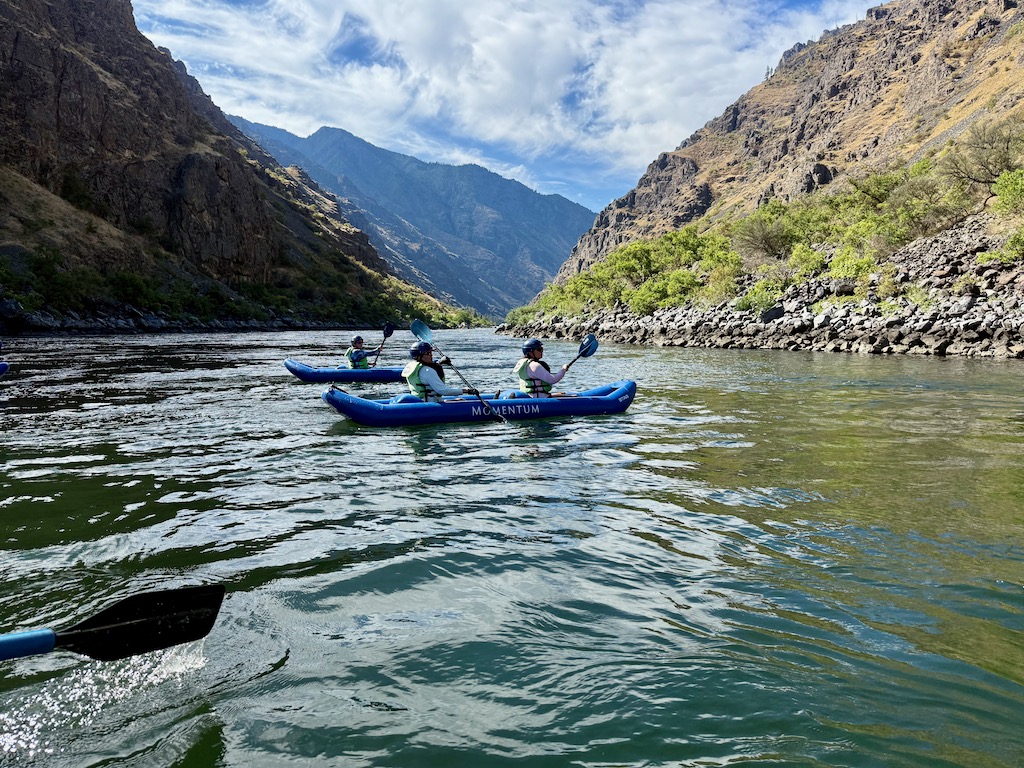
Being on the river brings out the most intense and authentic version of who people are. It allows relationships and conversations to progress at warp speed relative to what is possible in the normal course of our work. I returned home confident and knowing that this group can do hard things. We will keep up the momentum, keep supporting each other, and continue to have the hard conversations – preferably on the river!
Construction and revegetation at Ackerson Meadow are complete, and now it’s time to let nature do the work it does best! This marks a huge milestone in the movement towards headwaters restoration in California’s Sierra Nevada, with the Ackerson restoration standing as the largest full-fill meadow restoration in the Sierra Nevada and the largest wetland restoration in Yosemite National Park’s 135 years. When meadow restoration began as a practice in the Sierra roughly 45 years ago, a project of this size was a pipe dream for restoration practitioners, with significant hurdles to funding, permitting, and cross-agency collaboration standing in the way. But now, 150,000 cubic yards of soil and 434,000 wetland container plants later, water is flowing across the entirety of this fully restored meadow. Now the project’s partners, Yosemite National Park, Stanislaus National Forest, Yosemite Conservancy, American Rivers, and anyone who values clean water, healthy rivers, and thriving wildlife can celebrate.
The work at Ackerson is a gift that will keep on giving to generations of recreators, wildlife enthusiasts, and downstream water users. The benefits of restoring mountain meadows are both significant and wide-ranging, and a restored meadow has a sort of multiplier effect on the surrounding landscape and watershed. A healthy, fully restored Ackerson is projected to store 70.8 million gallons of groundwater each year, or enough water to satisfy the daily use of almost 250,000 households, while filtering out pollutants before flows enter the South Fork Tuolumne River. Of course, California is known as a global biodiversity hotspot, and Ackerson Meadow is home to nearly 60 species of birds and provides refuge for threatened and endangered species such as the Little Willow Flycatcher, Great Grey Owl, and northwestern pond turtle.
But Ackerson is also a gift for scientists and agencies who want to see this sort of work fine-tuned and expanded. We will monitor the site over the coming years, and the findings will feed into this ‘meadow movement’ organized by the Sierra Meadows Partnership, as we quantify the benefits of restoration: hydrological changes, soil carbon sequestration, and habitat recovery for endangered species.
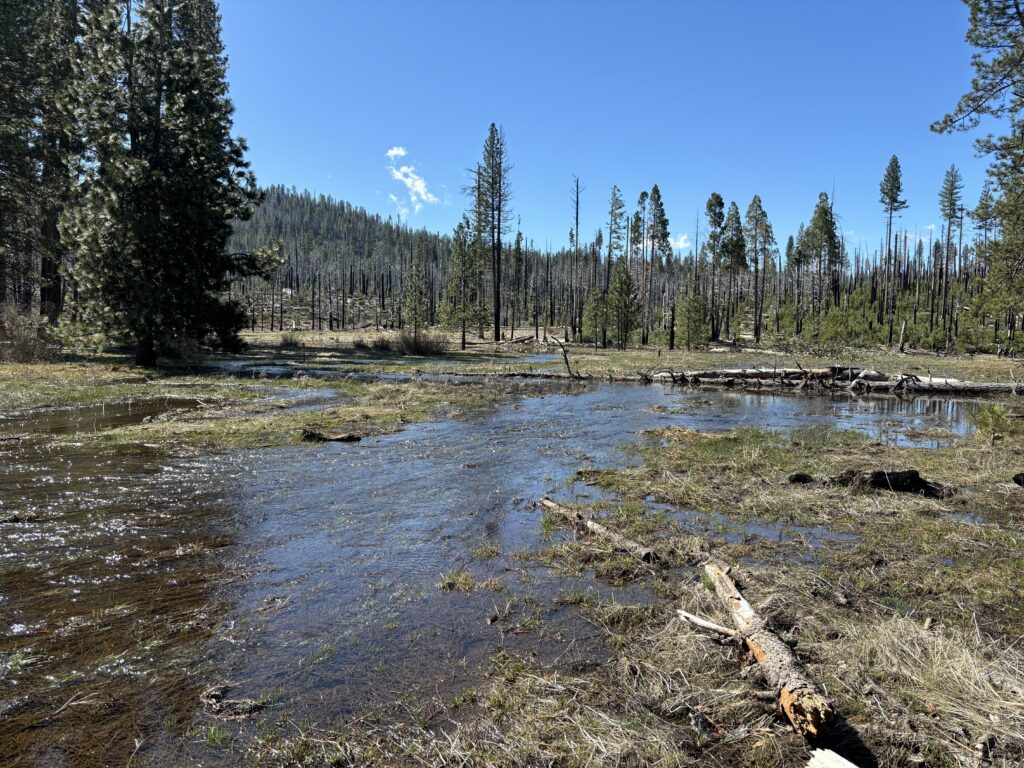
Outside of the direct benefits to rivers, ecosystems, and the scientific community, Ackerson is both a milestone and a launching pad, setting the table for expanded public-private partnerships with the federal land management agencies and nonprofit conservation organizations. Through our years of project management, we demonstrated how a nonprofit like American Rivers can bring technical expertise, fundraising capacity, and the flexibility to achieve conservation outcomes in short order. These partnerships and this project have shown not only the power of collaboration across different sectors, but also how a common vision can be approached from different angles, leveraging our collective expertise to the benefit of the communities we live in, the wildlife we cherish, and the rivers that are the lifeblood of California.
August 29th, 2025, marks 20 years since Hurricane Katrina hit the Gulf Coast. While Katrina was a category 3 hurricane when making land fall, the flooding and destruction after the storm far outweighed the initial impact.
In these 20 years, we have learned a lot about the challenges with levees and the importance of healthy, connected floodplains. Our Senior Director of Floodplain Restoration, Eileen Shader, reflects on these lessons and how state and federal governments can act to prevent that scale of destruction from happening again.
What can you do to help?
Take action: Tell states they must step up to make sure they are investing in floodplain management and floodplain reconnection and flood safety, and that that they have the rules and regulations in place to help guide local government and local decisions about where we develop and how we develop in floodplains to keep people and property safe.
The view downstream from here
A few short weeks ago, public lands and the rivers that flow through them were spared from a disastrous sell-off provision in a massive tax and spending bill. Victory was snatched from the jaws of defeat because of the nationwide bipartisan public outcry against the proposal from supporters like you.
But what happens now? Will there be more backroom deals and bills in the future that attempt to sell them off? Will there be attempts to enable misuse of public lands — effectively bulldozing America’s backyard and playground of regular people like you and me? You bet. Such proposals are like weeds — you can count on them sprouting up again and again. This is because influential special interests, from multinational mining conglomerates to big polluters, are always looking for schemes to get rich quick. The only remedy is to remain on guard, ready to defend against these bad ideas whenever they re-emerge. Or is it?
Defending existing protections is an essential part of protecting America’s rivers. Policies like the “Roadless Rule” protect critical conservation areas from new roads and timber clear-cutting. The pollution standards in the Clean Water Act keep harmful cancer-causing chemicals out of your drinking water. But these common-sense policies are under attack — whether it be by outright repeal, rescission, or by failure by agencies to do their job. And while a country must defend these protections, it shouldn’t stop us from seeking new ones. As the saying goes, “the best defense is a good offense.”
Communities across the country, and across the political spectrum, are proactively taking steps to protect their rivers and the values they provide as sources of drinking water, and as cherished places to hunt, fish, float, swim, and a multitude of other uses.
The many braids of a protected river
There is no one-size-fits-all solution for how to protect a river. Effective protection mechanisms vary across the country. The diversity of mechanisms to protect rivers is emblematic of American ingenuity — where there is a will to protect a river, we always find a way.
Here are a few examples to showcase the diversity of proactive river protection approaches happening right now across the country at the federal, state, and local levels.
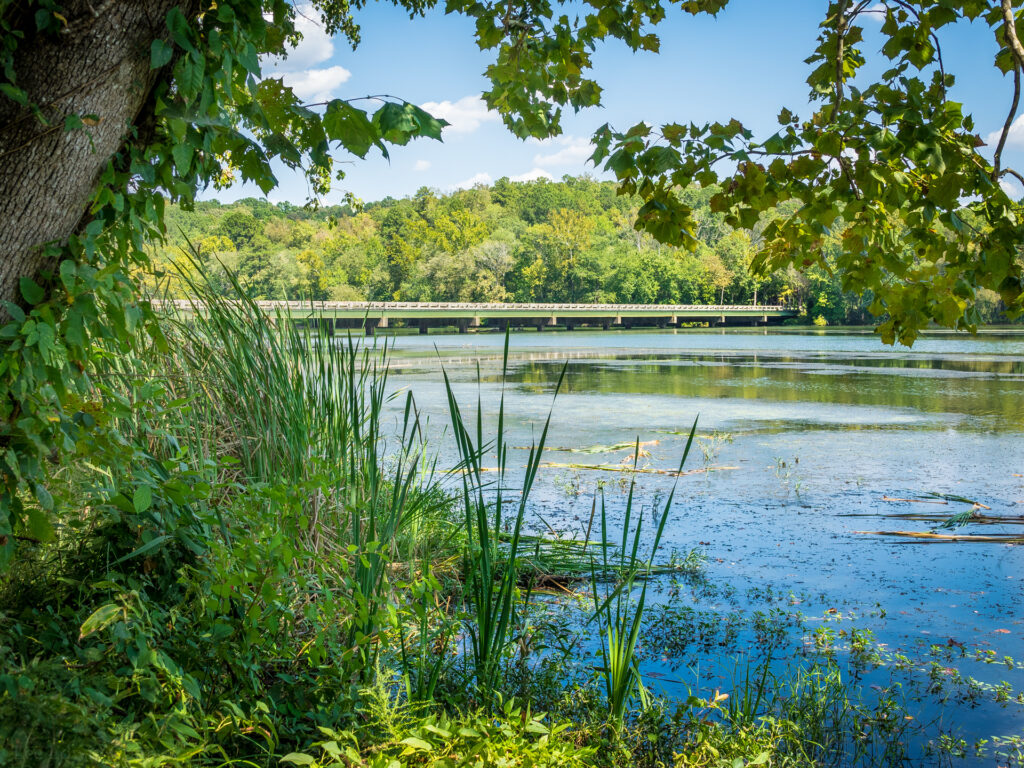
Federal
With so many threats occurring at the federal level to public lands and the agencies entrusted to manage them, one could be forgiven for assuming that positive proactive action to protect rivers would be put on hold. Not so. For example, Republican Congressman Vern Buchanan from Florida recently sponsored and passed the Little Manatee Wild and Scenic River Act to provide comprehensive and permanent legal protection for Florida’s cherished Little Manatee River. Florida Republican Congressman, Rep. W. Gregory Steube, and U.S. Senator Rick Scott each introduced another Wild and Scenic River bill to protect the Myakka River in Sarasota County, while Rep. Ryan Zinke just introduced a Wild and Scenic Bill to protect nearly 100 miles of the Gallatin and Madison rivers in Montana. And thanks to bipartisan action in Georgia, the Ocmulgee River could soon receive permanent protection as America’s newest national park and the first co-managed by a tribal nation in the region.
Many other examples exist, from coast to coast, but we often don’t hear much about them, because the good news of “offense” for rivers is all too often drowned out by noise from battles to defend existing protections. But the lesson is clear: ongoing bipartisan grassroots efforts to protect rivers remind us that protecting rivers is not a red or blue issue; it is a red, white, and blue issue.
State
States and municipalities across the country have passed their own zoning ordinances to create buffers that conserve land along rivers. Known as riparian areas, the trees and vegetation along the banks are the proverbial lungs of a river, allowing it to breathe and filter nutrients to maintain the healthy water quality we need to drink, fish, and swim safely. The State of New Jersey is just one example of a state taking action to protect rivers through riparian buffers.
The state passed legislation that created rules for establishing and maintaining riparian buffers statewide. As a result, the state of New Jersey has one of the highest rates of protected rivers in the country. Other states from Pennsylvania, to Minnesota, to the state of Washington have all proactively established their own systems for establishing and maintaining riparian buffers.
Another recent inspiring example of new protections for rivers at the state level comes from Alabama. In response to a groundswell of local public support, a coalition of local grassroots organizations successfully petitioned the Alabama Environmental Management Commission to update and strengthen clean water standards across the state. The Commission voted 6-1 in favor of the petition. The change will result in limiting the maximum allowed amounts of 12 toxic and cancer-causing pollutants, including cyanide, hexachloroethane, and 4-trichlorobenzene, in rivers across the state. The change will undoubtedly save lives and improve public well-being.
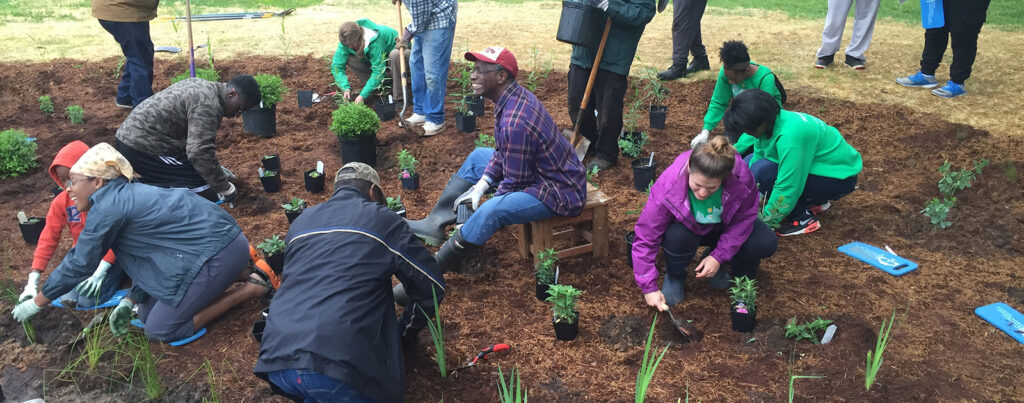
Local
Recognizing the importance of clean, reliable, safe drinking water to the city’s future, Raleigh, North Carolina, developed its own comprehensive watershed protection plan to protect rivers that supply drinking water to that community.
The protection plan involves land acquisition and conservation easements to protect private lands in the watershed. To date, the program has protected over 10,000 acres of land and 177 miles of streams. The protection program is self-sufficient, funded by a watershed protection fee of 11¢ per 100 cubic feet of water used. For the average residential customer, this equates to a charge of about 60¢ per month on their water bill — a fee far lower than would be required to fund the extra water treatment costs if the protections were not in place. Not only does Raleigh’s watershed protection program provide water security and create spaces for parks and recreation, it also saves its customers money and avoids the need for new taxes.
Local utilities and municipalities spanning red and blue states across the country from Texas to Arkansas to Ohio and New York and many others are implementing similar programs to protect rivers supplying drinking water to that community.
Any way you look at it, river protection pays off with a great return on investment for all of us.
Taking initiative
No matter where you live, your voice matters in keeping rivers healthy. It is essential to prevent backsliding from the protections we as a country worked so hard to achieve. We don’t want to see a return to the days when rivers like the Cuyahoga literally catch fire due to the level of pollution. Rivers are essential to life, liberty, and pursuit of happiness to all Americans. People from all different backgrounds and affiliations understand this and are mobilizing to protect rivers across the country.
As the examples above show, this is because the people understand that taking action to protect rivers and the public lands they flow through is indeed a red, white, and blue issue — not a red or blue issue. So regardless of your political affiliation, regardless of where you live, and regardless of your background, please don’t let your eagle’s eye for defense keep you from going on offense to protect what matters to you.
The One Big Beautiful Bill Act (OBBBA), also known as H.R. 1, is now law. Signed by President Trump on July 4 after months of intense negotiations, its path was anything but smooth. The legislation advanced through a fast-track process known as reconciliation, which allows members of Congress to bypass the typical 60-vote threshold in the Senate and pass bills with a simple majority in both chambers.
After passing the House, the bill moved to the Senate. Earlier this month, after substantial changes to the bill, the Senate passed H.R. 1 by a 51–50 vote, with Vice President J.D. Vance casting the tie-breaking vote. Three Republicans joined all Democrats and Independents in opposing the bill. Just 48 hours later, the House narrowly approved the Senate-amended bill by a vote of 218–214. All Democrats opposed the measure, joined by Republicans Thomas Massie of Kentucky and Brian Fitzpatrick of Pennsylvania.
The following analysis observes three ways in which the OBBBA presents modest opportunities and potential challenges for Western water infrastructure.
Revitalizing Western Water Infrastructure
Section 50501 authorizes and appropriates $1 billion to enhance conveyance facilities and improve surface water storage under the Bureau of Reclamation, which primarily operates in the West. Notably, this funding waives any reimbursement requirements or cost-sharing to states and tribes—offering a direct investment in Western water systems. Projects may include retrofitting dams like Shasta Dam for improved salmon migration, upgrading Colorado River facilities for greater efficiency, and addressing groundwater challenges.
While this funding provides a boost, it also raises concerns. Prioritizing the modernization of aging infrastructure without equal emphasis on long-term watershed health and public welfare could pose risks. And while $1 billion sounds substantial, it must stretch across 13 states with extensive and expensive needs—posing clear limitations.
Expanding Hydropower and Grid Reliability
Sections 70512 and 70513 preserve tax credits for hydropower operators to upgrade facilities, improve dam safety, and modernize equipment—all of which help bolster grid reliability and reduce service disruptions. More efficient systems and expanded storage capacity can lower energy costs while supporting river restoration efforts.
In 2024, the Department of Energy awarded up to $430 million in incentive payments to 293 hydroelectric projects across 33 states, aiming to improve both performance and environmental standards. While outdated dams that are no longer in use need to come down, others continue to provide needed energy. Many of these hydropower facilities are over 80 years old and in critical need of modernization.
However, these tax credits are not permanent. They expire at the end of 2036, creating urgency to complete upgrades within a limited window. Strengthening agency guidance will be essential to ensure these improvements deliver lasting ecological and operational benefits.
Boosting Conservation Tools for Farmers
Section 10601 strengthens the USDA’s voluntary conservation partnerships by expanding long-term funding for key programs like EQIP, CSP, RCPP, and ACEP. These initiatives support farmers and ranchers in adopting practices that enhance soil health, water quality, and wildlife habitat—often benefiting rivers and streams as well. By adding resources to the Farm Bill’s permanent funding baseline, the OBBBA ensures more stable, long-term support for sustainable land and water management.
The bill also allocates $150 million to the Small Watershed Program (PL-566) to support flood control, watershed rehabilitation, and retrofitting or removal of outdated dams. These investments improve community resilience, reduce downstream flood risk, and restore river connectivity. Beginning in FY 2026, the bill also provides $1 million annually for the Grassroots Source Water Protection Program, which supports locally driven efforts to safeguard drinking water sources through upstream conservation.
These measures expand the conservation toolkit significantly. However, existing programs—though effective—are often oversubscribed and challenging to access, especially for small-scale farmers. Streamlining application processes and increasing technical support will be key to ensuring access.
What Happens Now
Looking ahead, American Rivers will work closely with federal agencies—including the Departments of the Interior, Agriculture, and Energy—to recommend projects that upgrade infrastructure, protect rivers, and enhance aquatic and riparian habitats. These efforts will improve how water is captured, stored, and delivered across communities.
Meanwhile, Capitol Hill is already discussing the possibility of another reconciliation bill. We’ll continue monitoring legislative developments and will keep our partners informed of opportunities to engage and advocate for smart, sustainable water policy.
President Trump signed the One Big Beautiful Bill Act (OBBBA) into law on July 4th, 2025. The legislation passed both chambers of Congress after narrow, party-line votes and reflects major Republican priorities in tax policy, energy development, immigration enforcement, and regulatory rollback. Senate Majority Leader Thune delivered the bill to the White House just in time for the President’s Independence Day deadline, with Vice President J.D. Vance casting the tie-breaking vote in the Senate.
Recapping the top 5 Final Provisions
- Environment and Public Works
- Section 80151: “Project Sponsor Opt-In Fees for Environmental Reviews”
- Creates an opt-in fee program at the Council on Environmental Quality for expedited environmental reviews under the National Environmental Policy Act.
- Section 80151: “Project Sponsor Opt-In Fees for Environmental Reviews”
- Commerce, Justice, and Science
- Section _0008. “Rescission of certain amounts for the National Oceanic and Atmospheric Administration”
- Rescinds unobligated balances of the Inflation Reduction Act’s 40001 (coastal communities and climate resilience), 40002 (marine sanctuaries), 40003 (permitting, planning, and public engagement), and 40004 (research and forecasting weather).
- Section _0008. “Rescission of certain amounts for the National Oceanic and Atmospheric Administration”
- Energy and Natural Resources
- Section 50501: Reclamation Infrastructure Improvements- Subtitle E “Water”
- Authorizes $1 billion from the U.S. Treasury (FY2025–FY2034) for the Secretary of the Interior to enhance existing conveyance and surface water storage facilities managed by the Bureau of Reclamation.
- Funds are not subject to reimbursement or cost-sharing, offering direct investment in western water infrastructure.
- Section 50501: Reclamation Infrastructure Improvements- Subtitle E “Water”
- Agriculture
- Sec.10601. “Conservation”
- Increase baseline mandatory funding for four working lands programs (ACEP, CSP, EQIP, and RCPP)
- Provides $150M for the Small Watershed Program, commonly referred to as PL-566.
- Provides $1 million for the Grassroots Source Water Protection Program starting in fiscal year 2026.
- Rescinds unobligated balances of IRA funds within the four working lands programs.
- Sec.10601. “Conservation”
- Finance
- Sec. 70512. “Phase-out and restrictions on clean electricity production credit.” & Sec. 70513. “Phase-out and restrictions on clean electricity investment credit.”
- Wind and solar tax credits are phased out completely by 2027.
- 100% of the clean energy production tax credit (45Y) and clean energy investment tax credit (48E) are available only for hydropower, geothermal, and nuclear facilities if they start construction in or prior to 2033, then step down to 75% in 2034, 50% in 2035, and 0% in 2036.
- Sec. 70512. “Phase-out and restrictions on clean electricity production credit.” & Sec. 70513. “Phase-out and restrictions on clean electricity investment credit.”
Analysis
The bill’s water infrastructure provisions, including $1 billion in direct funding for Bureau of Reclamation facilities, could benefit western water delivery systems. However, without environmental safeguards or restoration priorities, these investments may have limited or even negative downstream impacts on river health.
The OBBBA sharply prioritizes tax breaks, fossil fuels, manufacturing, land privatization, and border enforcement while rolling back IRA-era investments in climate resilience and clean energy. While indeed some Farm Bill conservation programs see modest funding boosts and tax credits for hydropower are extended through 2036, these are outweighed and overshadowed by sweeping rescissions and divestments.
Regrettably, the legislation leaves rivers and river-dependent communities behind, exposing them to greater risks from pollution, flooding, drought, and other extreme weather disasters. It falls far short of addressing today’s urgent water security and infrastructure needs. Although the public lands sell-off pieces were ultimately removed, the attempt itself – combined with deep cuts to IRA-backed programs – sends a clear message: river restoration and climate resilience may not be receiving the level of attention and investment needed at this time.
The bill’s winners are defense industries, big banks, traditional energy producers, real estate developers, and high-income taxpayers. Its losers include Medicaid beneficiaries, clean energy industries, nonprofit and environmental sectors.
Next Steps
With the bill now enacted, the federal agencies will begin implementation immediately. Legal and environmental challenges are likely, especially around rescissions and Medicaid work requirements. The bill’s wide-ranging impacts are expected to shape national policy debates through the 2026 midterms and beyond.
Helpful Resources
The legislative text of the final bill is roughly 900 pages and was modified throughout the legislative process. For more detailed information, utilize these resources in addition to the summary of relevant public health provisions below.
- Full Text — H.R. 1
- Congressional Budget Office — Information Concerning the Budgetary Effects of H.R. 1, as Passed by the Senate on July 1, 2025
- Council of Economic Advisors – Legislation for Historic Prosperity
- Evergreen Action – Memo on H.R 1
World Nature Conservation Day is July 28. It is more important than ever to speak up and make your voice heard for our nation’s rivers. We know there is a lot going on in the world that can make it overwhelming to figure out what you can do to help. That’s why we’ve put together 5 simple things you can do this World Nature Conservation Day to make an impact in your community and nationwide:
1. Take Action: Sign our Clean Water Petition
Investing in clean water security generates a tremendous return on investment for the country. Clean water is not a luxury. It is vital to our future economic growth and essential to the heritage of our communities. Please ask your member of Congress to support this common sense blueprint for keeping America’s rivers safe and our water clean.
2. use our official handbook to organize a river clean up
If this is the first time you are hosting a river cleanup, download this one-stop-shop handbook on how to organize a successful event. It has everything you need — from tips on how to select a cleanup site to engaging your volunteers to securing attention from local media. Organize a river clean up in your community today!
3. Advocate for rivers through our action center
Be a voice for rivers: Last year, our community sent 30,000+ messages to decision-makers calling on them to take action for healthier rivers and cleaner water. Check out our Action Center and take action today!
4. Learn about the top 10 ways to conserve water at home
There are a few simple things you can do at home — Fix leaks, turn off the faucet while brushing your teeth — to ease the burden on your local water supply and save money in the process. These water-saving measures can have a big impact on water demand in your local community.
5. Share your favorite river!
Leave a comment here and share your favorite river and why you love it. If someone else has mentioned your river or a river you love, share your story with them. We are all connected by our waterways, let’s prove it!
One small action each day adds up to make a big impact over time. Share this list with your family and friends and revisit these actions when you can. Healthy rivers are for everyone, not just a privileged few. We are in this together, and it will take all of us in this movement to protect rivers and preserve clean water.
Growing up in Fort Collins, Colorado, the Colorado River has been a pillar of my life for as long as I can remember. As the child of a family that frequently took my younger brother and me rafting, the river was the backdrop of my best childhood memories. It was my first glimpse into the exciting world of white water, along with the beauty of nature. In many ways, it was responsible for my love of rivers in my youth. When your access to rivers is present, it becomes easy to forget the sanctity of water and the role that rivers play in everyone’s lives, whether present or not.
As a young adult embarking into the world of conservation through a lens of river protection, I have again been reminded of the importance of the Colorado River. This lifeline provides water to 40 million people and is a vital water source and spiritual foundation for 30 tribal nations throughout its vast footprint. In Colorado, it is a critical source of drinking water for Denver and most of the Front Range, including Fort Collins. It also sustains a vibrant agricultural heritage and economy across most of the state. Colorado is the primary headwaters state, delivering water for more than 1,450 miles from a tiny, high mountain rivulet, to raging whitewater in the Grand Canyon, to a salad bowl of America before crossing the border with Mexico. It sustains human life, recreation, and vital ecosystems in the region we all depend on.
However, we have collectively taken the benefits of the Colorado River for granted. Warming temperatures, lingering drought, and a fast-growing population have exacerbated unsustainable water management practices that threaten the very rivers our nation depends on. We are in the grip of a severe water crisis, according to leading scientists. The flow of the Colorado River has declined 19% over the past two decades, and Lake Mead and Lake Powell have both reached critically low levels. The increased demand for water from the Southwestern U.S has taken more water than the river can sustain. We are at a crossroads, and it is critical that leaders across the Basin identify a clear path forward.
This is a challenging time to lean into the world of conservation when so much remains unknown, and the road ahead seems uncertain. Nonetheless, hope springs eternal and provides a vision for a more sustainable and equitable future for protecting our vital rivers. In communities around the country, youth are stepping up and following in the footsteps of the river experts and advocates who have come before us. There is a growing community of voices, including young people, who have shown a deep commitment to rivers and protecting a future for all of us.
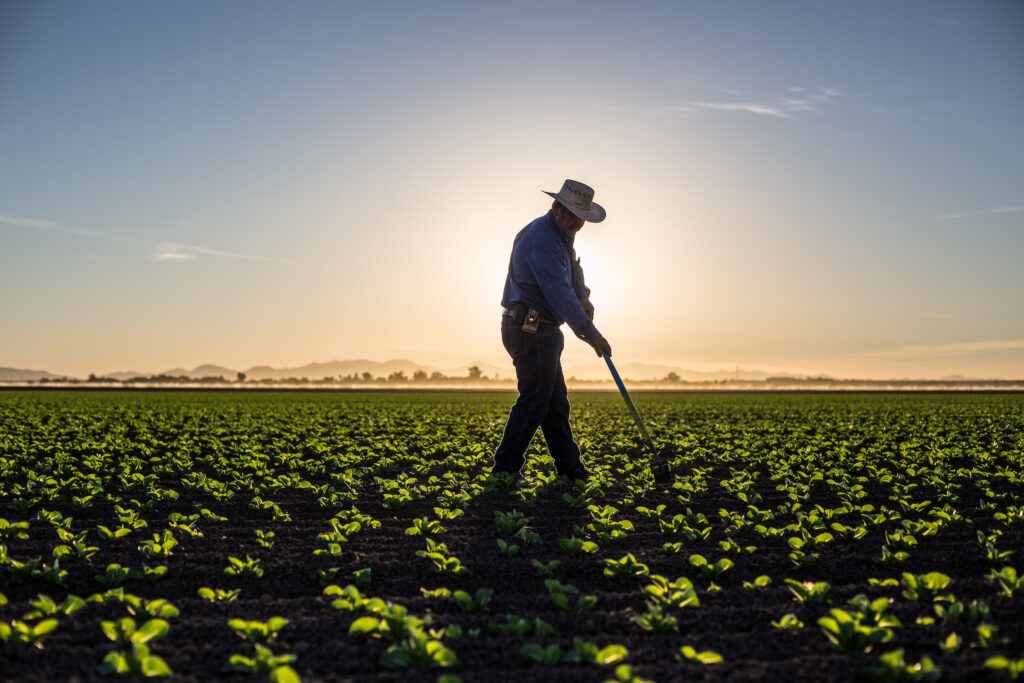
Earlier this year, Fort Collins enacted the city’s Water Efficiency Plan (WEP) to reduce water use, enhance landscape resilience, and minimize the risk of future water shortages. Fort Collins is dependent on the Colorado River for most of its drinking water and is setting an important precedent by emphasizing a conservation-first approach while incorporating community feedback and values into its structure. This policy is an important step for our future because it highlights a proactive river protection approach that reflects the impacts of our changing world.
I encourage you to get outside and reflect on the places or rivers that help you thrive, whether through recreation, appreciation for the drinking water they provide, or how they support an economy that benefits you and your community. Celebrate the folks around you who continuously fight for stronger water polices and healthy rivers. Support the passion and dedication of the younger generation who have banded together for the Colorado River, working to secure a future that sustains the life, culture, and communities we all depend on across the Southwest.
Dani Trevino joined American Rivers as the Southeast Conservation Intern for the Summer of 2025.
Some of my earliest memories of whitewater kayaking involve my mom waking me up early in the morning, my teenage self lazily walking to her car, and falling right back asleep in the passenger’s seat during the over two-hour-long car ride to Richmond, Virginia. When the Richmond section of the James River floods above eleven feet, a surf wave comes into play that attracts paddlers from all around. Memories of paddling here with my mom include endless flat spins, cramming paddlers in a line like sardines to see how many people fit on the river-long feature, and adrenaline rushing through my veins.
Another river wave I grew up surfing is just twenty minutes away from my house on the Potomac River. Like the wave in Richmond, it is only surfable at higher water levels. Another thing these waves have in common? They are both created by low head dams.
Low head dams are shorter structures where water continuously flows over the crest of the dam. At most water levels, this creates a washing machine-like hydraulic at the base of the dam that can trap and kill swimmers, paddlers, and rescuers. Although I went out on the river when I knew the water was high enough to wash out this hydraulic, my time with American Rivers this summer has opened my eyes to the harsh reality of low head dams.
My lifelong love for paddling inspired me to begin my internship with American Rivers. Immediately, I dove into the world of low head dam safety and regulations following the fatality of a park ranger at a low head dam in Pennsylvania. Low head dams were originally built for local needs such as water supply, powering mills, or irrigation, but many of these dams no longer serve a public purpose. Because most are less than fifteen feet tall, many states do not regulate them, exempting them from inspections and safety requirements.
The dams are deceiving to the eye; when looking downstream at a low head dam, their flat horizon lines often blend in with the river, making them almost invisible to see and very easy to miss. I soon realized that the occasional faded sign stating “Keep out, low head dam” fails to prevent the more than 1,400 fatalities that have occurred at these “drowning machines,” and approximately 50 additional fatalities occur each year. I learned that more than 20 people have passed away at Z Dam, and over 15 at Brookmont Dam, the two dams that I have learned to surf at during high water. I also discovered that low head dams are underregulated nationally, increasing the imminent threat to public safety in communities. Not only are they a threat to safety, but in a world facing the climate crisis, they disrupt aquatic ecosystems, fish passage, and river flow. Low head dams are a hazard to the public, boaters, and the environment alike.
As an experienced whitewater kayaker, I have gained a deep knowledge of river hydraulics and appreciation for river safety. This transfers to informed paddling at certain features. Clashing emotions occur; enjoying a surf session, but at a man-made dam that has taken numerous lives. How can one reconcile with a non-natural, persistent threat to public safety while relishing in a perfect surf on a rare river wave?
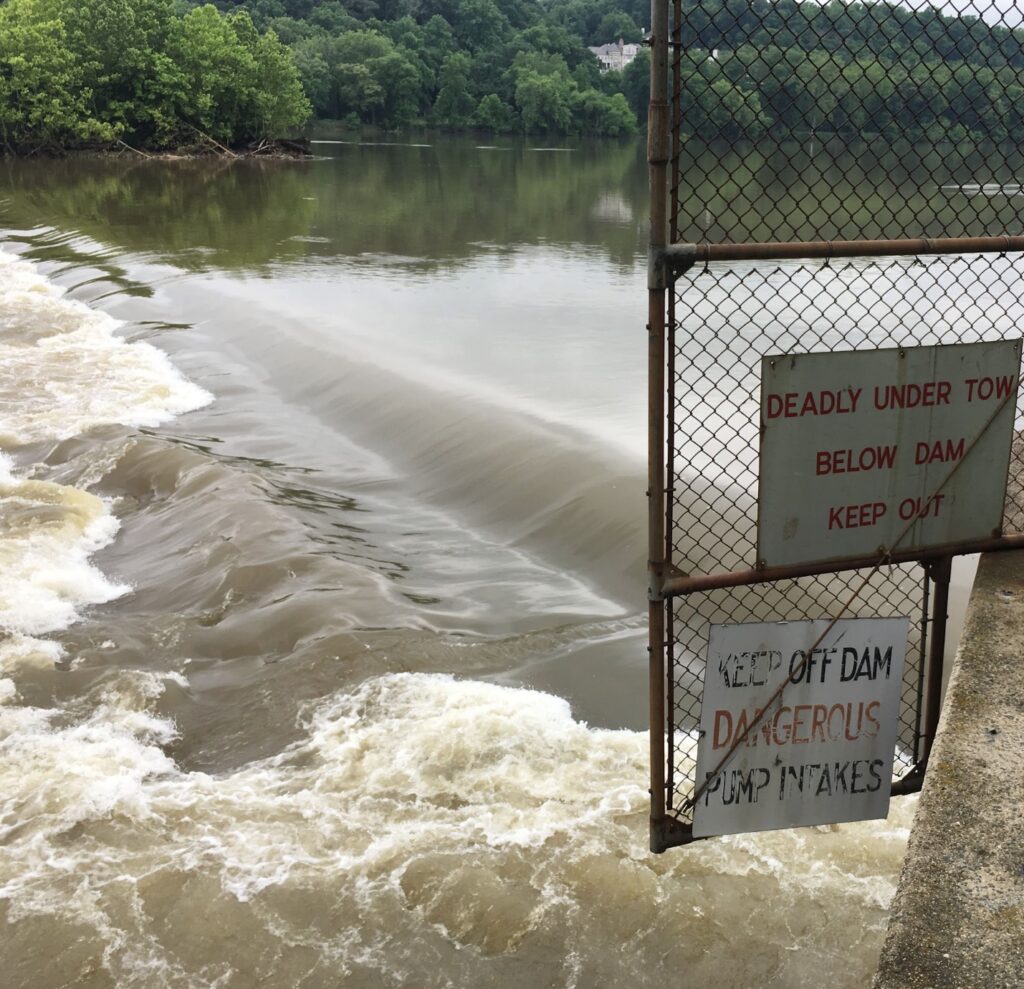
Greater public awareness of low head dam hazards is the first step in facing this dilemma. Understanding how low head dams are unsafe and supporting stricter regulation and removal can begin to change this life-threatening problem. During my internship, I identified which states have safety regulations or educational materials on low head dams, such as Indiana, Pennsylvania, and Virginia. I worked with a team to advocate for increased safety and community awareness at these dams and a smoother path to removing low head dams that are no longer necessary.
As a kayaker, I feel a strong responsibility to advocate for the protection of rivers and nearby communities. Using our unique knowledge of rivers, we can work to inform communities of the dangers of these dams. Even though there are some boaters who feel connected to a certain infrequent surf spot, or a swimming hole below a low head dam, free-flowing rivers are better for everyone: public safety, ecosystems, and recreation.
Think hard about your local lowhead dam or check the National Inventory of Low Head Dams if you do not know if there is one near you. Picture what this low, river-wide structure looks like, and the sound of the water flowing down its subtle yet consequential drop. Now think about the same spot if the impoundment were not there. Think about the possibility of more fish, more recreation, and increased safety. Imagine the river in its natural state, the river flowing freely, no deadly barrier in its way.
This is an attainable future if we continue to fight for it.
As for epic surf waves, there are plenty of natural waves on rivers across the country and abroad. My mom and I continue to find them and surf them. It is always more fun to get out on free-flowing rivers together.
Days after President Trump took office, he signed an Executive Order establishing a Council to Assess the Federal Emergency Management Agency (FEMA) and recommend changes, including potentially abolishing the agency. This Executive Order was followed by dramatic staff reductions and funding cuts for FEMA and other agencies charged with natural hazard management. The long-needed Building Resilient Infrastructure and Communities program that funded pre-disaster mitigation projects was suspended, and federal policies, like the Federal Flood Risk Management Standard, which was intended to promote flood-resilient infrastructure investments, were rescinded. The floodplain and emergency management community has been collectively holding their breath, waiting to see what these changes will mean for communities impacted by floods and other natural disasters.
Unfortunately, we’re watching the results play out in real time.
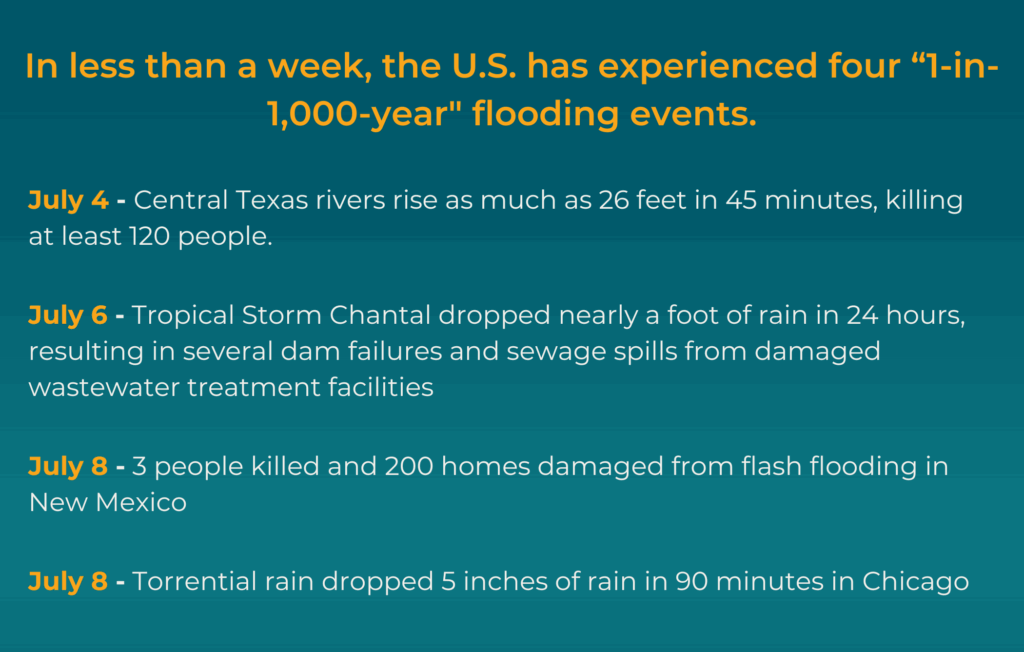
We’re still learning the details of how and why the Texas floods were so destructive, but what is clear is that improvements are needed by everyone involved in emergency management- federal agencies, states, local governments, and individuals.
U.S. disaster management systems are imperfect and in need of repair. Stories of residents being displaced for years after a disaster as they struggle to get reimbursed for damages and rebuild their lives are all too common. Inefficiencies in our bureaucratic systems move remarkably slow and the complexity of navigating agency processes makes even the experts heads spin. Increased efficiencies at the federal level are desperately needed, but states and local communities have always played a key role preparing for disasters – outspending the federal government 2:1 on disaster infrastructure thanks to revenue-backed state and local bonds and barrowing ability.
With the federal government stepping back from disaster mitigation and recovery it’s essential that states take steps now to fill the gap and help their communities prepare.
While the future of federal agencies critical to our disaster system, like FEMA, is uncertain, there are clear steps states can take to prepare.
- Know Your Risk: Relying on historical data to inform future decision-making is no longer effective. Updates in climate projections, modeling, mapping, and design allow for more informed planning and decision making. Clearly communicating risk to communities, disclosing flood risks, and proactively planning for increased resilience can mitigate the impacts of future events while providing residents the information they need to prepare.
- Coordinate Across Agencies: Preparing for and recovering from natural hazards is a shared responsibility across all levels of government and several agencies. States have separate departments for floodplain management, emergency response, natural resources, housing, and human services etc., but all these entities play an important role and need to work together. Establishing a Chief Resilience Officer with the appropriate authority to enact change can be an effective way to coordinate efforts across agencies. There are now over 16 states with this model.
- Grow Capacity: Managing any public funding requires people to administer the funds and oversight to ensure statutory requirements are met. One option currently being considered by the Trump administration is passing federal funding directly to the states; however, most states and communities are already understaffed and do not have the capacity to properly administer these funds, especially when federal funding has a high administrative burden with low overhead caps. If this option moves forward, it will be critical that federal funding programs increase the administrative caps and states begin growing their capacity to manage new funding, either from the federal or state government.
- Fund Integrated Hazard Mitigation: Preventing a disaster is far more cost-effective than recovering from one. State-integrated hazard mitigation programs are an effective way to reduce risk and create efficient systems tailored to local needs. Programs can utilize state revenue or receive infusions of federal funding, when available, making these programs more resilient to political shifts.
Effective state programs establish overarching goals and guidance but provide flexible funding to support local coordination, planning, implementation, and administration to ensure outcomes are locally driven. Prioritizing nature-based solutions like floodplain restoration, open space preservation, and coastal marsh restoration that provide multiple benefits to a diverse range of partners further strengthens support for these programs and maximizes investments.
- Strengthen Land Use and Development Standards: The National Flood Insurance Program (NFIP) sets minimum standards for land use and development for participating communities. While updates are long overdue to these minimum standards, states can adopt higher standards to reduce risk at any time. As states take on more disaster mitigation and recovery responsibilities, guiding development away from high-risk areas can reduce recovery costs and protect floodplain and wetland ecosystems while safely increasing economic development and meeting other community needs like affordable housing.
- Address Infrastructure Vulnerabilities: Our nation’s dam and are aging and many are in poor condition and struggling to keep up with modern storm events. States should establish dam and levee safety programs that fund inspections, maintenance, or removal of these structures when they have outlived their purpose.
With a new hurricane season upon us and the federal safety net thinning, states have a choice – either wait for the next storm or lead the way on building a safer, more resilient future.
The temperatures have made it quite obvious, but just in case you did not know, summer has officially begun! To get you all just as excited as we are here at American Rivers for those long summer river days, we asked you to share your river photos with us, and let me say, you all did not disappoint.
From cute pets to epic whitewater shots to serene sunsets, we’ve got it all. Below you can see just some of the pictures we received. It was so hard to pick which ones to feature, so if you don’t see your picture, don’t fret! Keep following American Rivers across our platforms to see if your picture is featured.
Now, enough of the chitchat. Let’s showcase some photos!
Whitewater
If you have been in whitewater, you know just how unpredictable it can be. With crossing currents, strong eddy lines, rock gardens, and more, you never paddle the same river twice. Just ask Bekah Grim:
“I got up close and personal with Pinnacle Rock at 2,800 CFS, a prime level just before this hit is washed out. This is in Brown’s Canyon on the Arkansas River in Colorado. I somehow landed in the raft and resumed guiding.”
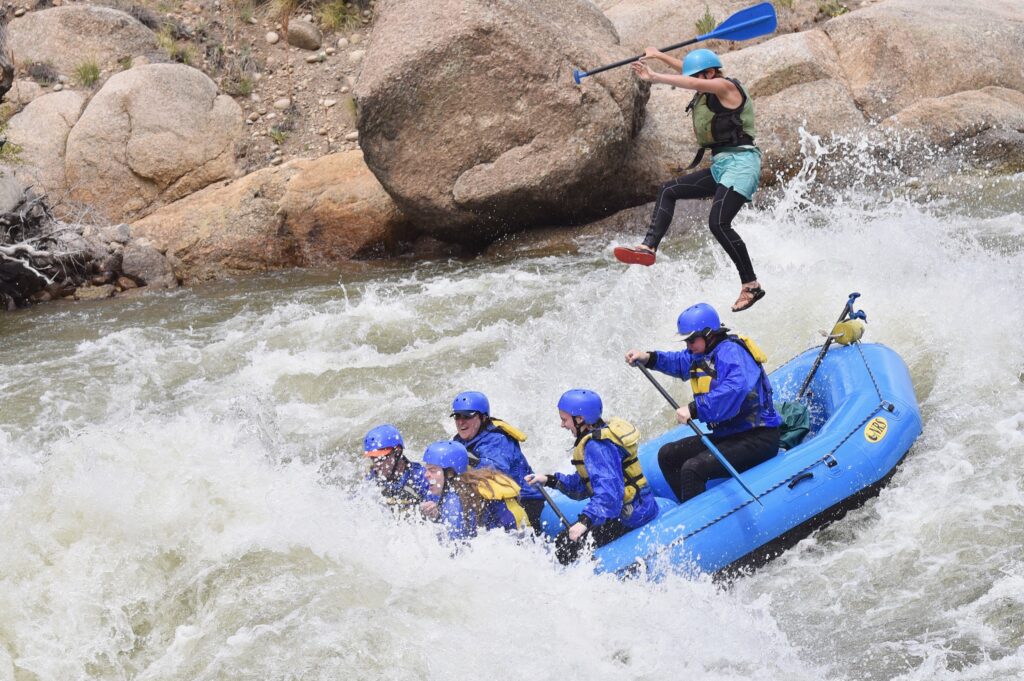
Sometimes you intentionally style yourself down some falls, which by the way, do not do without proper equipment, safety boaters around you, and knowledge of the river. Thankfully, Addison had all of those things when he decided to send Kanawha Falls on the Kanawha River in West Virginia on his paddleboard. Skill, precision, guts.
Paddling rivers and moving through whitewater also brings a sense of being part of something bigger. Mandela van Eeden shares what guiding on the Alsek River in Alaska means to her:
“I’ve guided rivers around the world for 20 years, but the Alsek remains one of the most powerful. From rowing across iceberg-studded Alsek Lake to preparing for the Turnback Canyon portage, every moment here reminds me: running rivers is a privilege, and with privilege comes responsibility. Wild places like this inspire awe, but more importantly, action. I guide to help protect them—because people fight for what they’ve experienced.” – Mandela van Eeden
Photos from left to right: Oceana Falls, Tallullah Gorge State Park | Robyn F. Baker, Wolf Creek Rapid on the Selway River, Idaho | Jake Blotter, Rackette River, paddling towards Long Lake in the Adirondacks of Upstate New York | Sarah Campbell
Pets and Wildlife
Who doesn’t enjoy a walk or paddle with their best furry friend? I mean come on…that smile says it all.
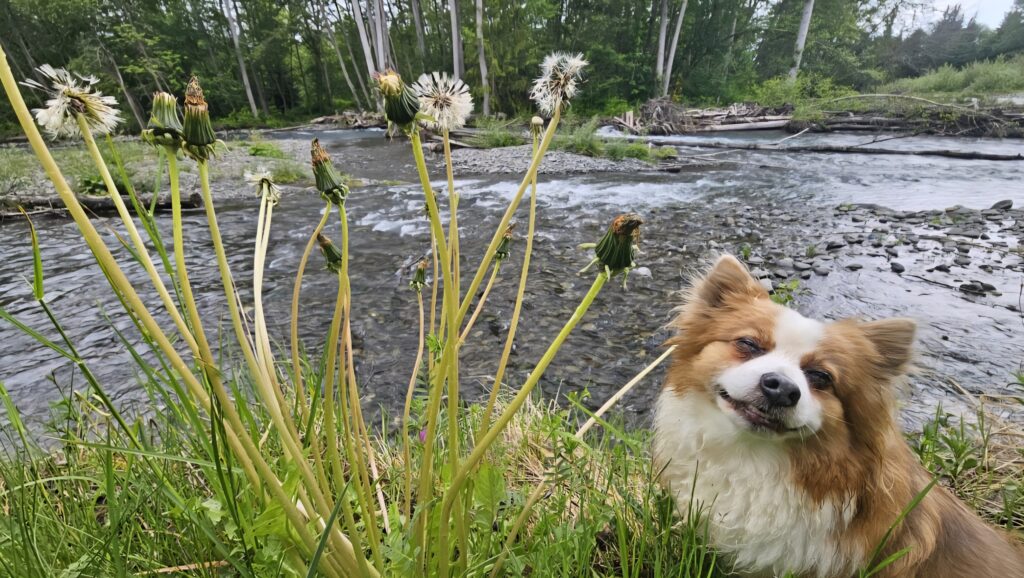
“Majestic protector” is what I would use to describe this pupper.
“Deerfield River near Charlemont, MA. Chili, our little rescue, loves paddling the lower section below the Gap in our inflatable. She watches over all members of our group when we go.” – Deborah Spadaro
Even if they might not be sure of it at first, floating with your furry friend is always a special time!
Photos from left to right: “We float the beautiful Buffalo National River every weekend in the spring/summer! Located in Arkansas & it is the 1st National River. 10/10 ❤️” Geneva Stafford | “Eddy, our 2 year-old rescue, wasn’t sure about his first paddling trip on the Haw River near Cary, NC. Lucky for him, little sister Rosie was happy to show him the ropes.” Kerri Hable | Tubing on the Pine Creek in Pennsylvania | Joseph Womer
Bonus: Check out some pro tips to keep you and your dog safe on the river all summer long! Make sure to be aware of your surroundings, you never know who is slithering by…or flying by!
Fishing
Fishing…one of the greatest pastimes. Whether you’re spending time with friends and family or going solo to be one with the river, fishing is an experience that truly can be described as “ya never know what you’re gonna get.” It can take you to some scenic areas where you get some pretty sick drone shots:
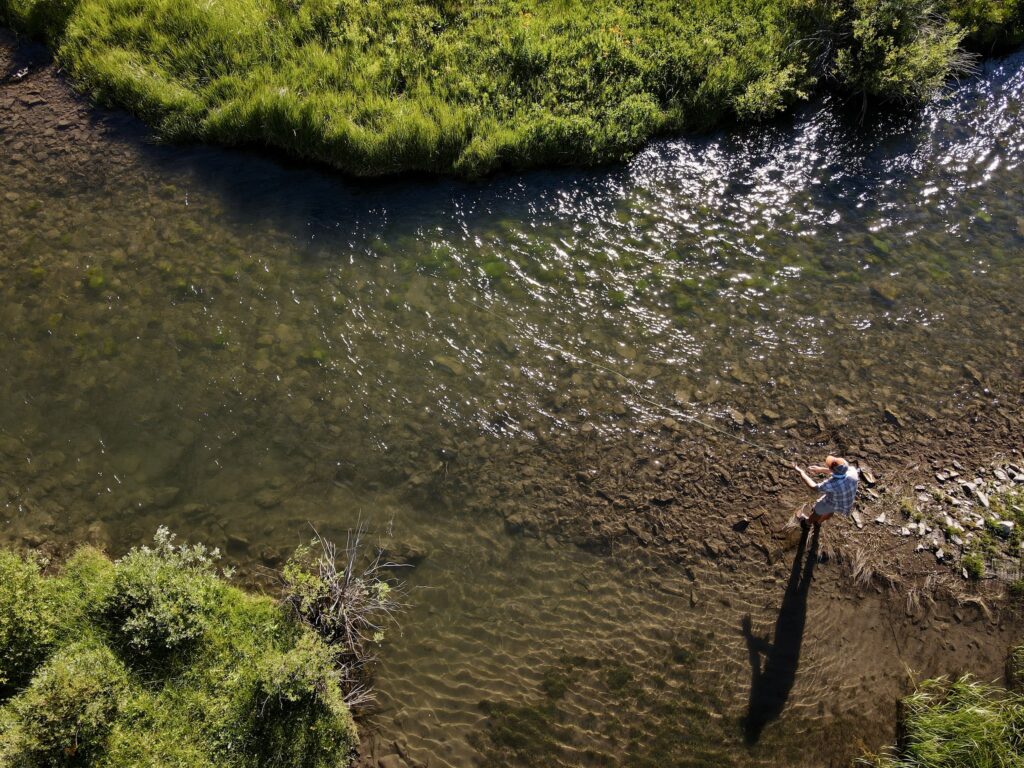
You’ll also find yourself in places where you are lucky enough to witness the most stunning sunsets.
“Last casts on Mattawoman Creek in Maryland. The freshwater tidal portion of this coastal plain river is a favorite of largemouth bass anglers who can be reluctant to call it a day.” – Jim Long
Captivating Beauty
Honestly, rivers are just freaking beautiful.
The story of just how important rivers are to us across the country is clear — we depend on rivers, and rivers depend on us. Rivers flow through our communities, they flow through our lives, and they flow through our taps, providing most of our nation’s drinking water. So, while you’re out on rivers this summer, take some time to learn more about them, take care of them, and have fun! And remember: Life Depends on Rivers™.
